I don’t think there’s any sports technology GPS watch startup that’s being watched as closely by GPS watch industry giants as COROS is. Now as you’ll see, it may not be entirely for the reasons you think, but no matter the reason – they are definitely being watched.
COROS first arrived on my radar a few years back with their COROS Linx helmet, which used jawbone conduction to let you listen to music while riding without blocking out ambient street/car noise. It was great, and well executed. It also became my day to day helmet. They went onto release a few more variants of that helmet over the last couple of years.
Then a year ago they announced the COROS Pace GPS watch, a full-blown multisport GPS watch. It was effectively a basic triathlon watch that was more or less a duplicate of the Garmin Forerunner 735XT in terms of looks and many basic features. Despite its somewhat basic software, it actually threw down really impressive GPS performance and strong optical heart rate performance. In many cases besting Garmin, Suunto, and Polar in my tests.
Skip down the road to this past November, and COROS announced their APEX lineup. These watches did away with the plastic look of the COROS Pace units, and instead looked a bit like a blend between a Garmin Fenix 5 and a Polar Vantage, with a side of Apple digital crown. Aside from the physical aspects, the company also added in additional training load related performance tracking software features. The price for all of this ended up being $299 – quite impressive.
Of course, the most basic question in many people’s minds is: Is it any good?
Well, it’s a complicated answer.
With the previous COROS Pace watches it was slightly more black and white, but with the APEX there’s a lot of grey. Not fifty’s shades worth, but, enough that nuances is important.
In any case – we’ll dive into all those details down below. Note that COROS sent over a few APEX media loaner units to test out (one of each size), and after this review I’ll stick them in a box and send them back. After which I’ll go out and pick up any units I want via normal retail channels. Just the way I roll. If you find this review useful, hit up the links at the end of the post to support the site.
What’s in the box:
There are two versions of the COROS APEX watch, a 42mm and a 46mm. Within that, there are a few color variants. The main differences between the 42mm and the 46mm are the case materials and battery life.
The 46mm gets up to 35hrs in regular GPS mode (and 100 in UltraMax GPS mode) – $349
The 42mm gets up to 25hrs in regular GPS mode (and 80 in UltraMax GPS mode) – $299
Meanwhile, on the materials front, the 46mm uses a titanium alloy bezel, while the 42mm uses a ceramic bezel. Both are waterproof to 100m and both have full barometric altimeters.
In any case, I tested two variants. I tested a white 42mm as my primary watch, and then I also had a black 46mm variant that I double-checked some stuff on, including one workout where I wore one of each watches (more on that in the accuracy section).
Here’s the outer box:
Next, once we crack open the box we’ve got three things inside: The watch, the cable, and the manual set.
The watch has a nifty little bit of plastic protecting it. I always appreciate companies practicing safe shipping.
Meanwhile, the cable is a three-pronged affair that charges only. You cannot download files from it via USB, as download can only happen via the mobile app.
Then there’s the user guide. You won’t need it after this post.
And…that’s it. A quick and tidy look at stuff. Fear not – you’ll get plenty of pics of the watch throughout this review.
Oh, but because I don’t have all the units, here’s a quick cheat sheet that COROS has to the sizes, straps, and colors:
Ok, now it’s onto the main review.
The Basics:
From a basics standpoint, no matter which watch you’ve selected, everything is the same. To start, the watch is *not* a touchscreen watch, which is good. I rarely find touchscreens work out well for endurance sports watches. Instead, you have a mere two and a half buttons. You’ve got one dedicated pressable button in the lower right, followed by one digital crown in the upper right.
The digital crown can be rotated to scroll through menus and pages, while it also serves as a secondary button when pressed in. COROS has basically duplicated the button layout of an Apple Watch here…except without the requisite touchscreen.
Meanwhile, the strap is detachable. For the 46mm variant it has a 22mm strap, whereas the 42mm watch has a 20mm strap. It uses standard watch straps, so you can mix and match based on whatever you find on Amazon.
On the default watch face you’ve got a near identical duplication of the Garmin Fenix series (at right) watch face, making it an easy transition for those coming from Garmin.
Don’t worry though, if you’re trying to move away from the Garmin ecosystem you can change these within the app to non-Garmin watch faces if you prefer:
On the backside of the unit is both the optical HR sensor as well as the charging port:
Next, you can scroll through various widget screens, which include basic metrics like stairs and calories:
Or 24×7 heart rate, and pressing the digital crown button will take you to the instant HR screen:
Scrolling again takes you to a threesome of a selection showing pressure, altitude, and temperature over the past 6 hours:
One more scroll and you’re down to the compass and GPS signal strength:
And finally, one last scroll and you’re into the smartphone notifications panel:
When it comes to daily metrics like steps or such, all of those are also viewable on the smartphone app. That image to the lower right is a near exact duplication of Apple’s famed circular activity chart:
You can’t view trends over longer periods of time beyond what’s shown above, nor is there any website that things are sent to for review. Meaning everything is contained within the app. Though, as discussed later, some metrics can be transmitted to Apple Health on iOS, as well as other 3rd party services like Strava.
If you want to tweak settings you can do so from within the app for many things, such as backlight options, do not disturb periods, and smartphone notification settings:
Interestingly, it allows you to toggle certain types of notifications – appearing to get those from the standard iOS (in my case) notifications center. Ones not listed here still come through as expected. For example, I use Nest Cams and those notifications come through as expected despite not being on the list above.
Finally, the last feature you’ve got is a page of your accomplishments, including ‘medals’ or badges that you’ve unlocked, as well as total time. Note that if you’re using an indoor trainer and haven’t paired the speed side of the equation over, these numbers will be rather low in wintertime (like mine are for cycling).
With that – let’s switch over to the fitness side of the house.
Sport Usage:
It’s likely the reason you bought the COROS APEX is for sport usage. So let’s get kicking into a sport mode. Simply tap the digital crown and then you’re presented with a list of sports to select. At present they are:
– Run
– Indoor Run
– Bike
– Indoor Bike
– Pool Swim
– Open Water
– Triathlon
There’s also a ‘System’ option and an ‘AI Trainer’ option, but more on those later.
Once you’ve selected a sport mode it’ll start acquiring your heart rate, as well as GPS signal (if an outdoors activity). You’ve also got the choice of either starting an open-ended activity, or doing Interval/Aerobic/Anaerobic Training.
The training modes are actually pretty interesting. It’s basically filling buckets within certain HR times, to achieve the desired impact. It’s frankly a rather logical way of doing it.
You can also shortcut into settings, and enable Auto-Pause, as well as distance, pace, cadence, and HR alerts. Distance alerts are based on preset distances, whereas the others are based on ranges (like 140bpm to 150bpm).
You can also configure basic intervals, using either time or distance for the work/rest portions, plus a separate warm-up and cool-down. You can’t download structured workouts to it, but as a basic interval mode it’s pretty handy.
We’ll go ahead and keep things simple for now and just do a regular run, sans-alerts. Once you’ve got GPS and HR lock, the icons will stay solidly lit, and you’re ready to roll. Press the digital crown again and off you go. I do like that if it doesn’t have lock yet on those, it’ll warn you that things won’t be good. A nice touch that other companies omit.
Once started you’ll see your data on your default data pages:
You can scroll through the data pages using the digital crown, which is about the most impossible thing ever when doing intervals. It’s just not good. While Apple uses a digital crown on their Apple Watch, you typically change data pages by just swiping the screen. But the COOS APEX isn’t a touch-screen, so no swiping here. I get that when sitting in a conference room the digital crown might be fine, I find it just annoying when running hard – or cycling.
You can press the lower right button to trigger a lap at any time:
It’ll show you the current lap time and lap distance. At this point that’s not customizable.
However, what is customizable is the data pages. To change these you’ll select the ‘Custom Interfaces’ option within the phone app, and then choose the sport you want to tweak:
You get five data pages you can customize, with between 2 and 6 pieces of info – more than any Garmin GPS running watch (on a per page basis, Garmin allows more pages):
For those cyclists in the room, you can display power as well, including normalized power (NP). It’s not clear if they’ve licensed this from TrainingPeaks like others, or just are using it. Either way, it’s there for now.
Speaking of sensors, you can currently pair ANT+ sensors. It does not support Bluetooth Smart sensors. At present it supports ANT+ power meters, ANT+ heart rate straps, ANT+ cadence sensors, and ANT+ speed sensors. No footpods yet. I used it with both a power meter and on a few activities also a heart rate strap:
Looking at cases where I recorded a power meter to the COROS APEX and also to a secondary Garmin device – the two plots of power meter data matched perfectly. So at least for that particular unit (Stages LR), it worked just fine. However, be warned that the COROS APEX cannot calibrate (zero offset) your power meter. So be sure you’ve got another app to do that.
COROS also added re-broadcasting of heart rate over ANT+, matching Garmin and skipping ahead of both Suunto and Polar which lack doing so over Bluetooth Smart. I didn’t use this feature because the way its implemented requires being in the broadcast-only widget mode, versus allowing me to enable it within a specific sport mode and still track on my watch.
After you’ve completed a workout you’ll be able to review the stats from the workout on the watch:
These are then synced to your phone once you’ve opened the COROS app and it’s brought to the forefront (it doesn’t seem to sync in the background for me). It’s an easy to read and clean basic layout of stats:
If you’ve configured sharing of the data, it’ll go to Health Kit, Strava, TrainingPeaks, and WeRun:
Alternatively, you can share a workout directly from the app via .FIT/.TCX/.GPX/.KML/.CSV – which is great, and then to various apps.
I’d love to see the company add direct Dropbox support. I think that’d be a hit with some of the geeks in the house, myself included.
Finally, let’s talk about the training load related stats.
When I first talked about the APEX months ago, I expressed skepticism that the company had done much due diligence on this front, compared to incumbents like FirstBeat and Polar (and many others). This skepticism was based on conversations where the company said they had done all the development work in-house, a bit of a red flag for a company that didn’t appear to have sport scientists or similar on staff.
Don’t get me wrong – there’s plenty of times I disagree with the assessment that either FirstBeat (who Garmin/Suunto/others use) or Polar gives me in terms of my workout load. And I also get that for some people, the assessments may not reflect reality (for me they tend to be very close). However, this actually isn’t about that. It’s about the fundamentals of their training load platform not adding up.
Still, let’s ramp into this one step at a time, in the same order as the app would show it. The first field you have is the one labeled ‘Training Load’. The chart attempts to plot the rise and fall of training load based on individual workouts. Except, there’s no logic to it. On days I throw down hard workouts, a few hours later it shows my training load at under half that. And then when I go out the next day and apply another hard workout, it doesn’t rise. Here’s two screenshots (one I took two days prior, one I took today at right).
Now in the one to the right with that orange peak, that day is a bit skewed (higher) because I was wearing two COROS watches for an interval workout. But that proves my point even more: It’s got double the accumulated load of a reasonably strong interval workout, yet the next day it unexplainably drops by more than half to 50 (and I haven’t done anything yet – it shouldn’t plot anything yet unless it’s doing time-based depreciations like EPOC, which it isn’t, since it doesn’t depreciate throughout the day).
Even more – look closely at the numbers above on Jan 31st, it actually changes the values down the road. Two days ago my training load value for Jan 31st was ~85, but then today it’s now showing at ~40. Huh?
To demonstrate how little seems to be understood about this – consider the duration they show the training graph at: Just 1 week. It’s unchangeable.
The entire point of tracking training load is over many weeks, months of data. You can’t see anything in a week. Garmin, for example, has three settings (seen above) – 4 weeks, 12 weeks, and 6 months. Polar shows a one-week view but when you click on the chart it expands out to three months by default. Suunto allows you to change the time scale as well. Everyone does – that’s the *singular point* of training load.
Next, let’s look at the ‘Fitness index’ section:
Here, they got RHR (Resting Heart Rate) correct, so that’s good. Because even some of the biggies screw this up. Though, some of the big companies also now separate out RHR while asleep versus awake. Then it shows my VO2Max as 53. That’s low. I’m tested at 61 (albeit a few years ago, but that wouldn’t shift), but 53 is far too low.
Inversely though it randomly lists my *threshold pace* at 6’02”/mile (3:45KM). To begin: No. Just no. As much I’d love for that to be the case, it’s simply not. Threshold pace is roughly considered 15-20 secs/mile slower than 10KM pace. For the moment, let’s just assume my 10KM race pace is a simple 4:00/km (6:23/mile, so a 40min 10KM). It might be faster, or a bit slower, but that’s a safe number for me. That would put my threshold pace at 6:40/mile, not 6:02/mile.
But here’s the thing – I’m not even upset about it being off by 40-seconds/mile. I’m annoyed they don’t double-check their own numbers. For my age/gender (36yo male), it’d be near impossible with a 53 VO2Max to have a threshold pace of 6:02/mile. That would imply a 5:45/mile 10KM pace, or a 35-minute 10KM road race time. All research out there indicates that would require a VO2Max of 60 (not 53 as indicated by the app).
What’s funny there though is that the app itself actually pulls the Cooper Institute tables (which is widely used by many organizations to yardstick performance), but they don’t seem to heed any of the underlying metrics from that organization. I don’t know where the lactate threshold value is coming from in the COROS app. Though, it does manage to match my Garmin value at 171bpm. So I’ll give them that.
Next, below that is Stamina:
It claims to be a combination of VO2Max, lactate threshold, and workout efficiency. In general, I’m actually not opposed to such a number, but since this is based on the metrics above that are skewed already, the foundation right now here is shaky. Since my VO2Max is clearly off, then this number will be off.
With that, there’s something called ‘AI Trainer’, that’s accessible in the sport menu. This appears to be taking recovery into account, and shows how many hours are left for full recovery:
Ignoring the fact that the algorithm recovers far too fast (like 2x too fast), the usage of the term ‘Stamina’ here is duplicate of the term in the previous screenshot, and they don’t match in terms of actual data or purpose. This one here shows 88% (decreasing from 100% during a workout and rising again afterwards), while the other one shows 52.1 (not percent). One shouldn’t have two totally different metrics named the name thing. In talking with COROS, they agree and are looking to change the app-driven one to something else. This particular Stamina concept I do like – since it reminds me a little bit of what Xert is doing with some of their metrics.
Finally, note that you can configure heart rate zones within the app’s settings. Tap the picture of yourself, and then you can change them to show zones in ‘Lactate Threshold Zone’, ‘Max Heart Rate Zone’, or ‘Heart Rate Reserve zone’:
This is also where you set RHR, because while COROS will measure RHR, it doesn’t use the measured number for any recovery calculations. Confusingly it uses this statically set number deep in the menus. While that might have impacted some recovery metrics, it wouldn’t have impacted my specific concerns on training load – since my concerns were focused on how things are displayed more than the actual number itself. Finally, note that at this point these zones are not available beyond heart rate to areas such as cycling/running power.
GPS Accuracy:
There’s likely no topic that stirs as much discussion and passion as GPS accuracy. A watch could fall apart and give you dire electrical shocks while doing so, but if it shows you on the wrong side of the road? Oh hell no, bring on the fury of the internet!
GPS accuracy can be looked at in a number of different ways, but I prefer to look at it using a number of devices in real-world scenarios across a vast number of activities. I use 2-6 other devices at once, trying to get a clear picture of how a given set of devices handles conditions on a certain day. Conditions include everything from tree/building cover to weather.
Over the years I’ve continued to tweak my GPS testing methodology. For example, I try to not place two units next to each other on my wrists, as that can impact signal. If I do so, I’ll put a thin fabric spacer of about 1”/3cm between them (I didn’t do that on any of my COROS APEX workouts). But often I’ll simply carry other units by the straps, or attach them to the shoulder straps of my hydration backpack. Plus, wearing multiple watches on the same wrist is well known to impact optical HR accuracy.
Next, as noted, I use just my daily training routes. Using a single route over and over again isn’t really indicative of real-world conditions, it’s just indicative of one trail. The workouts you see here are just my normal daily workouts.
I’ve had quite a bit of variety of terrain within the time period of COROS APEX testing. This has included runs in: Amsterdam, Nevada: Las Vegas + Nearby Mountains, and Cape Town, South Africa. Cities and countryside, mountains, trees, desert, oceans, and open-air. It’s been everywhere!
Let’s get right into it with a relatively easy run alongside the waterfront last night. This was an intervals workout, but it was mostly on the promenade and/or sidewalks, making it actually really easy to spot when the GPS track goes awry. There were a few points where I was near some buildings, but those were somewhat rare. Here’s the data set from that:
This is a unique set in that I’ve actually got not one, but two COROS APEX units on this run. On my left wrist I have the COROS APEX 42mm, whereas on my right wrist I’ve got a COROS APEX 46mm. I’ve also got a Garmin FR935 and Suunto Trainer Wrist HR along for the ride as well, mostly collecting HR data from other straps.
At a high level, things look pretty strong. No obvious issues. Let’s zoom in a bit though, here’s the first looped area:
With the exception of the part near the sandy beach, the COROS APEX units are spot on. However, near the beach the 42mm does go off and play in traffic – something generally frowned upon here. The Spartan though does briefly do the same as I’m finishing my cool-down though.
Along the waterfront edge the 42mm seems slightly offset from the rest. Not a huge amount, perhaps 3-5 meters. But noticeable:
However, once I turn the corner a few hundred meters later it seems to sort itself out, and the main section where I do significant back and forths for my intervals is perfectly on-point:
Finally, what’s somewhat interesting here is the distance totals recorded by each unit. Both the two COROS watches were notably below the Garmin and Suunto watches – by almost 200m. I don’t really know where they lost:
There’s no single moment where it lost the distance, but rather, a very slow roll. You can see the gap very slowly separating throughout the run.
Next, let’s head out for a run through Amsterdam’s Vondelpark. In this case compared against a Forerunner 935 and Vantage M. Here’s that data set:
You can see right off the bat from the view above that the Vantage M is struggling in certain sections of the (mostly wide open) park. Notice how that red track is off in the buildings/woods on both the northern portion, but also offset on the lower southern portion. However, the COROS APEX matches near perfectly the FR935 – and right on track on the northern portion.
But on the southern portion it’s slightly offset from the trails, matching the Vantage M a bit.
Towards the eastern edge of the park you see the Vantage M continue to struggle, but actually so does very briefly the COROS APEX. You see it dip through one section of pond there. Had it been summer people would have been sunbathing there too and trampling over them, but this time of year you’d just have been cold and wet with the ducks.
Still, on the whole it’s pretty close. Not as good as the FR935 in this case, but better than the Vantage M.
Now, let’s transition to some road riding. First back to the deserts about 45 minutes outside of Vegas. This is interesting because while this entire ride was on asphalt, some sections were on tight and winding bike paths – a great test of GPS:
At a high level it looks fine, and indeed, on the roads it was. But it’s those smaller bike paths that things sometimes go off the rails…err…road. For example, you can see this turn here where the Vantage M just cut straight across. Note, this was a low-speed turn (going uphill). The COROS APEX nails these backs and forthsb without any issue at all.
Same here where the track is spot-on and only the Vantage M struggled.
Since this ride had some nice elevation changes in it, let’s take a quick diversion over to elevation related stats. After all, that’s a key selling point of this unit over most other sub-$300 multisport devices that lack a barometric altimeter:
You can see that it and the Stages M50 while offset, do mirror each other. I don’t know which one had the correct starting elevation, but I like that they maintain their offset throughout. The COROS APEX does allow you to set the elevation manually if you want, or you can utilize GPS to obtain the initial lock. The Polar Vantage M lacks a barometric altimeter, but actually didn’t do too bad here at all. A bit smoothed as is often the case, but nice.
And then we’ve got one last ride – this time a ride here in Cape Town along the coast on a relatively wide road, but up against some cliffs in some sections:
As I departed the city areas, things were pretty solid from all units, including the COROS APEX. No problems with buildings:
However, as I started to head out of town, there were definitely a few spots were the Vantage M sliced the corners a bit (in orange on these charts). The COROS APEX didn’t exhibit that issue.
Same goes for other areas of the road – it nails them all perfectly.
Lastly, let’s look at an openwater swim or two. Here’s one from a few days ago up at a reservoir outside of Cape Town. From a topography standpoint it basically sits atop a mountain, and has wide open lines of sight – so zero GPS disrupters here! On one wrist I had the COROS APEX, while the other wrist had the Polar Vantage M (both in swim mode). Then, for track reference I had a swim buoy with both a Garmin FR935 and Suunto Trainer Wrist HR in just regular running mode (so they properly track every second, whereas openwater mode would try and apply fancy algorithms to them):
Ultimately, here’s what that data set looked like:
In retrospect I should have just done one loop, because it makes it harder to see. On my second loop I realized this and decided to split the lake down the middle. So let’s remove everything except a single reference track and the COROS APEX:
You can see that it’s all over the place here, like the Polar Vantage M track compared to the reference is below. However, the APEX is worse because it wiggles around even more (thus falsely adding distance), plus, it draws a shark fin in the upper corner.
Below is the reference track compared to the Vantage M:
Note that the best openwater GPS tracks I’ve seen to date have actually come from Apple. Here’s a video I did back in October – including the COROS Pace series as well on openwater swim GPS testing:
Oh, as for the other recent swim, it was a few days ago as well. This is an *incredibly tough* swim for GPS units to track, due to one swimming in a canal (maybe 2ish lanes wide) with 4-8 story buildings on either side of it. Even the reference GPS track struggled. While the other wrist-based unit on this swim was the Polar Vantage M (and the track was really bad), it wasn’t nearly as useless as the COROS APEX.
The APEX recorded in the (very rough) ballpark of the right distance, but the actual GPS track only managed to connect my start and end points – a mere 50m away from each other (I’ve highlighted it in yellow – that tiny little line):
Look, on this particular swim route (the most challenging GPS-wise I’ve ever swam), I’m not expecting miracles. But, I’m also expecting it to at least plot more than the start and finish points. Polar gets some points for managing to very vaguely plot the return trip (albeit missing the front half).
Now, openwater swims aside, GPS accuracy for me has been very close. Not the best I’ve ever seen, but still more than good enough for most people. Note that at this point it’s only GPS+GLONASS, though, I haven’t seen significant gains yet from Galileo in most of the watches I’ve tested. Of course, the full satellite constellation is only just coming online, so things should get better there soon.
Ultimately though, I don’t have any major land focused complaints on the COROS APEX when it comes to GPS accuracy.
(Note: All of the charts in these accuracy portions were created using the DCR Analyzer tool. It allows you to compare power meters/trainers, heart rate, cadence, speed/pace, GPS tracks and plenty more. You can use it as well for your own gadget comparisons, more details here.)
Heart Rate Accuracy:
Before we move on to the test results, note that optical HR sensor accuracy is rather varied from individual to individual. Aspects such as skin color, hair density, and position can impact accuracy. Position, and how the band is worn, are *the most important* pieces. A unit with an optical HR sensor should be snug. It doesn’t need to leave marks, but you shouldn’t be able to slide a finger under the band (at least during workouts). You can wear it a tiny bit looser the rest of the day.
Ok, so in my testing, I simply use the watch throughout my normal workouts. Those workouts include a wide variety of intensities and conditions, making them great for accuracy testing. I’ve got steady runs, interval workouts on both bike and running, swimming, as well as tempo runs and rides. Basically, most everything a typical triathlete would do.
For each test, I’m wearing additional devices, usually 3-4 in total, which capture data from other sensors. Typically I’d wear a chest strap (usually the Garmin HRM-DUAL, Polar H10, or Wahoo TICKR), as well as another optical HR sensor watch on the other wrist (and sometimes also either the Scosche Rhythm 24, and Polar OH-1). Note that the numbers you see in the upper right corner are *not* the averages, but rather just the exact point my mouse is sitting over. Note all this data is analyzed using the DCR Analyzer, details here.
Let’s dive right into things, first up with a run from two weeks ago. More or less a straightforward run with a bit of intensity shift in the middle as I climbed up a tiny bit, but otherwise pretty vanilla. But we want to start easy and then crank the screws with each successive set. Here’s the DCR Analyzer set if you want to dig in deeper yourself:
We see the nice and proper gradual increase in intensity from the HRM-DUAL whereas the Vantage M and COROS APEX don’t quite get it right. The COROS does some weird bobble, and the Polar follows alone slightly under as well. Nearly 3 minutes into my run I’m still at 110bpm according to it.
Beyond that point though, the three sorta agreed – the APEX is mostly in agreement with the HRM-DUAL, though the Vantage M has these weird bobbles.
I’d point out this little bump here:
This little spike in HR (only up to 164bpm) is spot-on correct by the HRM-DUAL. It’s when I went a bit harder up a short/steep hill. Not all out, but enough that you notice it. Whereas the COROS APEX and Vantage M missed the boat.
And…time for another run. This one back in Vegas and mostly steady-state on/off road. Same crew – Polar Vantage M (in brown), COROS APEX, and HRM-DUAL. Here’s the data:
You see a nice clean build by most of them, but slightly nicer from the HRM-DUAL. Shortly after that the Polar Vantage M completely loses the plot for about 4-6 minutes for some unknown reason, but the COROS APEX holds on pretty well. After that moment the dip for all of them is me taking a picture at the ‘Leaving Las Vegas’ sign (so the dip is correct). From there, the rest of the run is pretty much the same for all of them, save a few brief bobbles from the Polar Vantage M.
Next, we’ve got an interval run from a week ago. This had a ton of HR data to look at.
On my left wrist is the Polar Vantage M (yellow), whereas my right wrist has the COROS APEX 42mm. Meanwhile, I’m wearing the Garmin HRM-DUAL on my chest, while my upper left arm has the Polar OH-1 optical sensor, and the upper right arm the Scosche Rhythm 24 optical sensor. All these are therefore properly separated. There’s no more beautiful HR testing setup I can think of than this.
The workout was an interval workout: 10-minute warm-up, then 6x400m, then 2x800m, and then 2x30s sprints, all with 90s recovery between each set. Oh, and a brief cool-down. Let’s look at the warm-up:
You can see the HRM-DUAL chest strap struggled to catch onto my heart rate (in blue). Why? Well, that was technically my fault. I had wet the strap prior to departing the house, but by the time I walked down to the waterfront it had dried in the cooler morning air. A key issue with chest straps that has been around for decades. Once I looked down a few minutes into the run and realized this, I applied some spit to the strap and it immediately rectified itself. As for the Polar Vantage M optical HR sensor (yellow/orange)? It’s completely and totally lost during this until the conclusion of the warm-up when I start walking.
Let’s look at the six 400m sets:
Here’s my quick analysis of all six sets:
#1: All good except Polar Vantage M losing the plot briefly
#2: Polar Vantage-M missed the recovery by 20bpm, Garmin HRM-DUAL struggled to find lock, COROS APEX also struggled to find lock, Polar OH-1 blip
#3: Polar Vantage-M good, Garmin HRM-DUAL struggled to find lock, COROS APEX a wee bit delayed, brief Polar OH-1 blip
#4: Polar Vantage-M lost the plot, Garmin HRM-DUAL struggled to find lock, COROS APEX a bit delayed
#5: Polar Vantage-M good, Garmin HRM-DUAL failed entirely
#6: All mostly good here, though, a bit of a delay on HRM-DUAL into the recovery.
Hmm. I remember moving the strap slightly on my chest at some point towards the 5th or so interval, and that seems to help the Garmin HRM-DUAL strap from there on out. Check out the remaining 2x800m and 2×30-second sprints:
You can see here the HRM-DUAL was perfectly fine (along with the COROS APEX), whereas the Vantage-M totally missed both by a wide chunk (especially notable since these were twice as long, so it had twice as long to figure it out). The pace for the 800m was a 6:23/mile (4:00/KM), and the pace for the sprints was around 5:00-5:30/mile (3:00-3:30/KM). So plenty of variety from a cadence standpoint.
I have zero idea why the HRM-DUAL failed here so badly on the first six sets. I haven’t seen that elsewhere. And typically when we see failures in intervals, it’s exceedingly rare to see them for chest straps. It’s almost always optical, not chest straps. Maybe it was something environmental, or perhaps my shirt or something weird (though, it’s the same shirt I’ve run in quite a bit lately). Inversely, I don’t know why the Vantage M failed on the 800’s. Sigh.
The COROS APEX wasn’t the worst of the bunch, but it definitely wasn’t the best either.
Still, I’d seen enough weird quirks that I wondered if there were differences between the 42mm and the 46mm. For example – what if I put one on each wrist and did the interval workout again? Ask and you shall receive – here’s last night’s workout:
I’ve also got Wahoo TICKR-FIT data alongside HRM-DUAL data in there too. But I was really bummed, because both the Scosche Rhythm 24 and Polar OH-1 failed to gather the data in the offline modes. I’m sure it’s probably user error, but it’s still frustrating nonetheless.
You can see though that the 42mm struggles right out of the gate, and then again through 3 of the 6 intervals (the 400m ones). For the 2x800m intervals, it nails those perfectly. And for the two 30-second sprints, it completely misses the boat. Oddly though, the 46mm only messed up once: The final walking cool-down (somehow).
I’m not sure what to make of this, but it’s interesting nonetheless.
Next, let’s head out cycling– this time out to the desert for a couple hour wander by bike. This one was interesting because the efforts varied quite a bit. It’s compared against the Garmin HRM-DUAL strap and Polar Vantage M watch (optical), and it allows you to see how well things work in very cool/dry environments (it wasn’t hot), as well as with a bit of wind. The HRM-DUAL was recorded to the Stages M50 unit. Here’s the data files.
At first you might even think the Polar Vantage M was paired to the HRM-DUAL, but when you look more closely you can see the nuanced differences. The Vantage M optical sensor lags a little bit, and in some parts of the ride differs considerably – especially for short burst efforts. All tell-tale signs of an optical HR sensor that’s struggling slightly. Still, on the whole, this is actually one of the best performances I’ve seen from the Polar Vantage M in harder conditions. The COROS APEX meanwhile, is mostly lost the vast majority of the time.
Meanwhile, on the way back you can see areas in yellow where the Vantage M was significantly behind the chest strap (I’ve highlighted the chest strap below, but you can see the red Polar line offset from each of these). Again, semi-common optical HR lag. Whereas the COROS APEX in blue (42mm) was pretty much perpetually wrong by huge amounts.
I don’t generally like to look at averages across a ride/run/anything, because a unit can be totally wrong the entire time and still get a close average. Nonetheless, you can see the average heart rate between the Stages (which is what the HRM-DUAL was paired under) and the Polar Vantage M, in comparison to how far apart the average is for the COROS APEX.
Last but not least we’ve got an openwater swim. Actually, I tried to do a few openwater swims and gather HR data, but Polar’s H10 offline caching thing with the Polar Beat app is a hot mess. For my first attempt at it, I didn’t put it in the right mode apparently, and thus it didn’t cache/download the data right. On my second swim, the data came out completely useless. As if the strap was malfunctioning. Of course, all of this strap data downloading should absolutely be built into the product like it is for Garmin/Suunto, but it’s not.
In any case, here’s a look at some HR data I captured earlier in the week during a swim. On this swim, I’ve got the Polar Vantage M on one wrist, the COROS APEX on the other, and then a Scosche Rhythm 24 on one upper arm. I wore the Polar H10, but again, that data was useless. Here’s the data set:
The yellow/orange color is the Polar Vantage M. While I’m not entirely sure who is right, I’m going to guess that the Vantage M is correct for at least the first 10 minutes or so. Mostly since there’s little chance my HR was 70-80bpm while swimming. Then around the 11-minute marker the COROS APEX goes a bit wonky for a few minutes. And by ‘a few minutes’, I mean the rest of the swim. That’s definitely not correct.
However, the Polar Vantage M and Scosche are pretty similar. Certainly not as close as we’ve seen in runs or rides, but not totally misaligned. There’s one point where the Vantage spikes and the Scosche doesn’t. I’d put this in the category of ‘mostly believable’, but I just don’t know for sure.
Of course, if you’ve read my reviews long enough you’d know that for the most part I don’t tend to see a ton of value in swimming HR. It doesn’t align as well to efforts as running or cycling does in my experience, and is usually a bit more cumbersome to view due to having to turn your wrist just right. And for example, the water where this swim was in, was super low-visibility, enough that I could barely make out the numbers on my wrist in front of me.
As for HR accuracy on the whole?
Well, I’ll break it apart by the sports I focused on (again, just talking optical HR accuracy here):
Running: Fine for steady-state running, but a really mixed bag for intervals
Cycling: Just bad. About the worst I’ve seen.
Swimming: Solidly mixed. Might be some bright points in there, but it’s a lot of not the same too.
Looking at the sensor setup they’ve got – I’d question the arrangement of the LED’s. In general, there are reasons why other companies have done them in the ways they’ve done them – and COROS should probably consider that when looking at future optical HR sensor arrangements. I think there’s some more work the company could do in terms of software algorithms, but I don’t think they’ll have as much flexibility as someone like Polar would in terms of where we could see things shift from here.
Planned Updates:
Back in November the company briefed me on upcoming features, alongside a timeline of them. The list included the following at the time:
November:
– Sleep Tracking [Done]
– Spanish and German Support [Done]
– UltraMax Mode [Done]
– Enable watch HR broadcasting [Done]
December:
– Add navigation tracking [Pending]
– Add more workout modes [Pending]
– Add more watch face options [Done]
Of course, there’s actually a bunch more updates that have been added since then, which can be seen in the release notes. Most are minor tweaks and not major updates. But, it’s appreciated nonetheless. As of today, COROS says they’re hoping for the navigation modes to release before the end of February.
Still, I think COROS has a future ahead of it in this space, but they need to step back a bit. The mobile app (and to a lesser extent the watch) is riddled with errors. Many of them are language/grammar driven, but not necessarily just simple typos. Instead, they are fundamentally confusing terms and ways data is presented (as I talked about in the sports section).
Here’s my advice, and it’s actually rather simple:
A) Hire a small full-time team of athletic-minded people in an English speaking country that can both vet the product for errors, but also just as sanity checks on functionality and features. I believe COROS needs 4-6 full-time employees that understand the end consumer of these very products, but also understand what these features should be doing from a performance standpoint. Ideally having one of these employees with a sport science background would be incredibly helpful. This could also include user interface experts that would allow the company to shift away from duplicating the user interfaces of Garmin’s hardware and Apple’s software to have COROS’s own unique look/feel.
B) Plot out a feature list that isn’t duplication, but innovation: I know it’s easier to duplicate hardware and software of their competitors, but people do see through that. You don’t want to be known as the brand that just duplicates everything. While COROS is claiming some industry-leading battery life specs for trail running type scenarios in this form factor, everything else is simply very much copies of other companies’ features (down to the font). Yet if the company focuses on features like their real-time mid-workout stamina feature, that could be really compelling.
C) Focus on accuracy: I’m not convinced the optical HR sensor on the APEX was designed well for sports. It seems to be more akin to a 24×7 sensor setup than one driven to deal with endurance sports and sorting through cadence lock issues. While I had good results on the COROS PACE, something changed in APEX, be it hardware or software (perhaps to hit those battery specs).
D) Slow the roll on products: While it’s desirable to do yearly releases to keep up with competitors, I don’t think that’s what COROS should do here. I think they need to really fine-tune what they have from a software standpoint, and add in features there instead. Again, I know more hardware is always better to sell and get media attention – but you don’t want attention on things that aren’t ready.
Again – I really do think COROS has a strong potential in this space if they can focus on the above. They aren’t far away. They just need to step back and take a breath and clean up what they’ve built. And then give it their own style.
Product Comparison:
I’ve added the COROS APEX into the product comparison database, allowing you to mix and match it against other products. Priced at $299, it’s theoretically super competitive in the multisport watch scene. But the devil is in the details. So it has many of the big ticket back of the box type features, but once you scratch the surface it gets a bit messy. Nuance is a tougher nut to detail in comparative charts in some cases.
In any case, for the purpose of this chart I’ve compared it against the Polar Vantage M, Suunto Spartan Trainer Wrist HR, and Garmin Forerunner 735XT. Note that one can still buy the far more capable FR920XT (usually about $200), though it doesn’t share the round-watch face look. Either way, something to consider. Note you can make your own comparison tables here.
At a simple glance, none of the others on this list have a barometric altimeter. So that’s a key item, as are the battery run times. However inversely, the COROS is the least full featured when it comes to the backend app/platform.
| Function/Feature | COROS APEX | Garmin Forerunner 735XT | Polar Vantage M | Suunto Spartan Trainer Wrist HR |
|---|---|---|---|---|
| Copyright DC Rainmaker - Updated November 17th, 2022 @ 10:06 am New Window | ||||
| Price | $299 (42mm), $349 (46mm) | $349 | $279 | $279 ($329 for metal bezels) |
| Product Announcement Date | Nov 2018 | May 11th, 2016 | Sept 13th, 2018 | August 10th, 2017 |
| Actual Availability/Shipping Date | Nov 2018 | May 11th, 2016 | November 2018 | August 30th, 2017 |
| GPS Recording Functionality | Yes | Yes | Yes | Yes |
| Data Transfer | Bluetooth Smart (smartphone) | USB/Bluetooth Smart | USB, BLUETOOTH SMART | USB & Bluetooth Smart |
| Waterproofing | 100m | Yes - 50m | Yes - 30m | Yes - 50 meters |
| Battery Life (GPS) | 25hr (42mm), 35hr (46mm), up to 100hrs UltraMax | 14 hours in GPS-on | Up to 30 hours | Up to 30 hours |
| Recording Interval | 1-second | 1S OR SMART | 1s | Variable |
| Alerts | Audio/Visual/Vibration | Vibrate/Sound/Visual | Vibrate/Visual | Visual/Vibrate |
| Backlight Greatness | Great | Good | Great | Great |
| Ability to download custom apps to unit/device | No | Yes | No | No |
| Acts as daily activity monitor (steps, etc...) | Yes | Yes | Yes | Yes | Music | COROS APEX | Garmin Forerunner 735XT | Polar Vantage M | Suunto Spartan Trainer Wrist HR |
| Can control phone music | No | Yes | No | No |
| Has music storage and playback | No | No | No | No |
| Streaming Services | N/A | No | Payments | COROS APEX | Garmin Forerunner 735XT | Polar Vantage M | Suunto Spartan Trainer Wrist HR |
| Contactless-NFC Payments | No | No | Connectivity | COROS APEX | Garmin Forerunner 735XT | Polar Vantage M | Suunto Spartan Trainer Wrist HR |
| Bluetooth Smart to Phone Uploading | Yes | Yes | Yes | Yes |
| Phone Notifications to unit (i.e. texts/calls/etc...) | Yes | YEs | Feb 2019 | Yes |
| Live Tracking (streaming location to website) | No | Yes | No | No |
| Group tracking | No | No | No | |
| Emergency/SOS Message Notification (from watch to contacts) | No | No | No | No |
| Built-in cellular chip (no phone required) | No | No | No | No | Cycling | COROS APEX | Garmin Forerunner 735XT | Polar Vantage M | Suunto Spartan Trainer Wrist HR |
| Designed for cycling | Yes | Yes | Yes | Yes |
| Power Meter Capable | Yes | Yes | Yes | Yes |
| Power Meter Configuration/Calibration Options | No | YEs | Yes | Yes |
| Power Meter TSS/NP/IF | NP only | Yes | No | No |
| Speed/Cadence Sensor Capable | Yes | Yes | Yes | Yes |
| Strava segments live on device | No | Yes | Future Update (Date TBD) | No |
| Crash detection | No | No | No | No | Running | COROS APEX | Garmin Forerunner 735XT | Polar Vantage M | Suunto Spartan Trainer Wrist HR |
| Designed for running | Yes | Yes | Yes | Yes |
| Footpod Capable (For treadmills) | No | Yes | Yes | Yes |
| Running Dynamics (vertical oscillation, ground contact time, etc...) | Yes | YEs | No | No |
| Running Power | Yes | Yes with 3rd party devices (not built-in like Vantage V) | ||
| VO2Max Estimation | Yes | Yes | Yes | Yes |
| Race Predictor | No | YEs | No | No |
| Recovery Advisor | Yes | Yes | No | Yes |
| Run/Walk Mode | No | YEs | No | No |
| Track Recognition Mode | Yes | Swimming | COROS APEX | Garmin Forerunner 735XT | Polar Vantage M | Suunto Spartan Trainer Wrist HR |
| Designed for swimming | Yes | Yes | Yes | Yes |
| Openwater swimming mode | Yes | Yes | Yes | Yes |
| Lap/Indoor Distance Tracking | Yes | Yes | Yes | Yes |
| Record HR underwater | Yes | WITH HRM-TRI/HRM-SWIM | Yes | Yes |
| Openwater Metrics (Stroke/etc.) | Yes | Yes | Yes | Yes |
| Indoor Metrics (Stroke/etc.) | Yes | Yes | Yes | Yes |
| Indoor Drill Mode | Via Drill Log | Yes | No | No |
| Indoor auto-pause feature | - | No | Yes | No |
| Change pool size | Yes | Yes | Yes | YEs |
| Indoor Min/Max Pool Lengths | 15y/m-300y/m | 17M/18Y TO 150Y/M | 20M/Y to 250 m/y | 15m/y to 1,200m/y |
| Ability to customize data fields | Yes | Yes | Yes | Yes |
| Captures per length data - indoors | YEs | Yes | Yes | |
| Indoor Alerts | Yes | Yes | N/A | No | Triathlon | COROS APEX | Garmin Forerunner 735XT | Polar Vantage M | Suunto Spartan Trainer Wrist HR |
| Designed for triathlon | Yes | Yes | Yes | Yes |
| Multisport mode | Yes | Yes | Yes | Yes | Workouts | COROS APEX | Garmin Forerunner 735XT | Polar Vantage M | Suunto Spartan Trainer Wrist HR |
| Create/Follow custom workouts | Yes | Yes | Yes | No |
| On-unit interval Feature | Yes | Yes | No | Yes |
| Training Calendar Functionality | Yes | Yes | No | Yes | Functions | COROS APEX | Garmin Forerunner 735XT | Polar Vantage M | Suunto Spartan Trainer Wrist HR |
| Auto Start/Stop | Yes | YEs | Yes | |
| Virtual Partner Feature | No | Yes | No (but can give out of zone alerts) | No |
| Virtual Racer Feature | No | Yes | No | No |
| Records PR's - Personal Records (diff than history) | No | Yes | No | No |
| Tidal Tables (Tide Information) | No | No | No | No |
| Weather Display (live data) | No | Yes | No | No | Navigate | COROS APEX | Garmin Forerunner 735XT | Polar Vantage M | Suunto Spartan Trainer Wrist HR |
| Follow GPS Track (Courses/Waypoints) | Yes | Yes | No | Yes |
| Markers/Waypoint Direction | Yes | Saved locations only | No | Yes |
| Routable/Visual Maps (like car GPS) | No | No | No | No |
| Back to start | Yes | Yes | Feb 2019 | Yes |
| Impromptu Round Trip Route Creation | No | No | No | No |
| Download courses/routes from phone to unit | Yes | Yes | No | Yes | Sensors | COROS APEX | Garmin Forerunner 735XT | Polar Vantage M | Suunto Spartan Trainer Wrist HR |
| Altimeter Type | Barometric | GPS | GPS | GPS |
| Compass Type | Magnetic | GPS | N/A | N/A |
| Optical Heart Rate Sensor internally | Yes | Yes | Yes | Yes |
| SpO2 (aka Pulse Oximetry) | No | No | ||
| ECG Functionality | No | |||
| Heart Rate Strap Compatible | Yes | Yes | Yes | Yes |
| ANT+ Heart Rate Strap Capable | Yes | Yes | No | No |
| ANT+ Speed/Cadence Capable | Yes | Yes | No | No |
| ANT+ Footpod Capable | Yes | Yes | No | No |
| ANT+ Power Meter Capable | Yes | Yes | No | No |
| ANT+ Lighting Control | No | Yes | No | No |
| ANT+ Bike Radar Integration | No | Yes | No | No |
| ANT+ Trainer Control (FE-C) | FTMS (Bluetooth) only | No | No | No |
| ANT+ Remote Control | No | No | No | No |
| ANT+ eBike Compatibility | No | No | No | No |
| ANT+ Gear Shifting (i.e. SRAM ETAP) | No | No | No | |
| Shimano Di2 Shifting | No | Yes | No | No |
| Bluetooth Smart HR Strap Capable | Yes | No | Yes | Yes |
| Bluetooth Smart Speed/Cadence Capable | Yes | NO | Yes | Yes |
| Bluetooth Smart Footpod Capable | Yes | nO | Yes | Yes (+ Stryd Running Power Meter) |
| Bluetooth Smart Power Meter Capable | nO | nO | Yes | Yes |
| Temp Recording (internal sensor) | Yes | No | Yes | No |
| Temp Recording (external sensor) | No | Yes | No | No | Software | COROS APEX | Garmin Forerunner 735XT | Polar Vantage M | Suunto Spartan Trainer Wrist HR |
| PC Application | No | Garmin Express | Polar Flowsync - Windows/Mac | PC/Mac |
| Web Application | No | Garmin Connect | Polar Flow | Suunto Movescount |
| Phone App | iOS/Android | iOS/Android/Windows Phone | iOS/Android | iOS/Android |
| Ability to Export Settings | No | No | No | No | Purchase | COROS APEX | Garmin Forerunner 735XT | Polar Vantage M | Suunto Spartan Trainer Wrist HR |
| Amazon | Link | Link | Link | Link |
| Backcountry.com | Link | |||
| REI | Link | Link | Link | DCRainmaker | COROS APEX | Garmin Forerunner 735XT | Polar Vantage M | Suunto Spartan Trainer Wrist HR |
| Review Link | Link | Link | Link | Link |
Don’t forget you can make your own comparison tables here in the comparison database.
Summary:
As a brand, COROS is in an interesting spot. It’s spending significant capital to develop and market watches that appeal heavily to Western audiences, but its development is virtually entirely based in Asia. That’s not a problem unto itself, as many great brands have located significant parts of development and engineering in Asia (not talking manufacturing here, almost everyone does that). The challenge for COROS is that the watch focus seems to be on duplication of competitors, rather than innovation or perfection of the features they do have (such as the training bits).
Still, there are things I do like. The battery life is amazingly strong. In fact, I don’t even understand how COROS does battery life, it’s so good. Seriously, I have some other COROS watches that sit quietly for months on a shelf (always showing the watch face) without charging. It’s really astonishing. Next, the build quality is good. While one can quibble about it being a knock-off in the looks department, it does feel good. The materials have thus far held up, and it’s survived numerous brushes against hard sharp concrete bits and other prickly surfaces.
And unlike Garmin watches you can actually configure data pages on your phone (though, you can’t do them on the watch itself). Ultimately that’s a bit of a religious battle where some people want to tweak on phone and others on the device itself. Nobody to my knowledge in the watch space allows both yet. Not to mention I can put six data fields on a single page with COROS, albeit far less fields than Garmin offers.
And of course – the price is compelling, at $299 they’ve nailed that piece. Unlike the previous plastic COROS Pace which was also $299, they seemed to have listened here and that’s a really strong price for them, considering the hardware.
But I just wish the app and software matched the hardware.
I don’t feel like the new training load metrics are actually fully thought out. While one can have a discussion about preferences between Garmin/Suunto’s FirstBeat metrics and Polar’s performance metrics, you can’t really have that level of discussion with the COROS metrics. None of it really adds up the way its currently implemented, and doesn’t seem to pass the sniff test (it’s also got virtually no documentation behind it). It’s frustrating when a watch bills itself as a high-end competitor, but falls short in key aspects of being a high-performance watch. And I think the app needs some serious work. It just feels half-baked, especially in the language department.
But the bit of good news here is that I think the majority of the hardware (aside from the optical HR sensor) is incredibly capable. I think if COROS takes that step back I discussed earlier, spends the next 6 months on software features and fine tuning only, they could have a really amazing and competitive watch in the APEX for the fall timeframe. And that would be super compelling.
Found This Post Useful? Support The Site!
Hopefully you found this review useful. At the end of the day, I’m an athlete just like you looking for the most detail possible on a new purchase – so my review is written from the standpoint of how I used the device. The reviews generally take a lot of hours to put together, so it’s a fair bit of work (and labor of love). As you probably noticed by looking below, I also take time to answer all the questions posted in the comments – and there’s quite a bit of detail in there as well.
If you're shopping for the COROS APEX or any other accessory items, please consider using the affiliate links below! As an Amazon Associate I earn from qualifying purchases. It doesn’t cost you anything extra, but your purchases help support this website a lot. Even more, if you shop with TPC (The Pro's Closet), you'll save $40 on purchases over $200 with coupon code DCRAIN40! The Pro's Closet has been a long-time partner of the site here - including sponsoring videos like my cargo bike race, as well as just being an awesome Colorado-based company full of good humans. Check them out with the links below and the DCRAIN40 coupon!
And finally, here’s a handy list of accessories that work well with this unit (and some that I showed in the review). Given the unit pairs with ANT+ & Bluetooth Smart sensors, you can use just about anything though.
And of course – you can always sign-up to be a DCR Supporter! That gets you an ad-free DCR, access to the DCR Quarantine Corner video series packed with behind the scenes tidbits...and it also makes you awesome. And being awesome is what it’s all about!
Thanks for reading! And as always, feel free to post comments or questions in the comments section below, I’ll be happy to try and answer them as quickly as possible. And lastly, if you felt this review was useful – I always appreciate feedback in the comments below. Thanks!





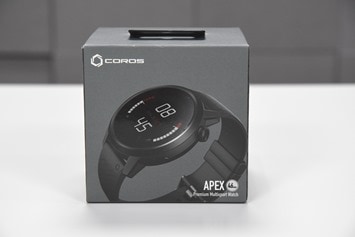
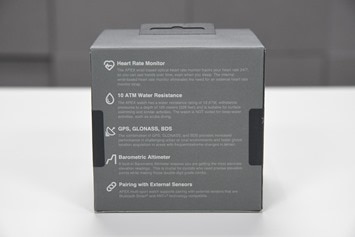
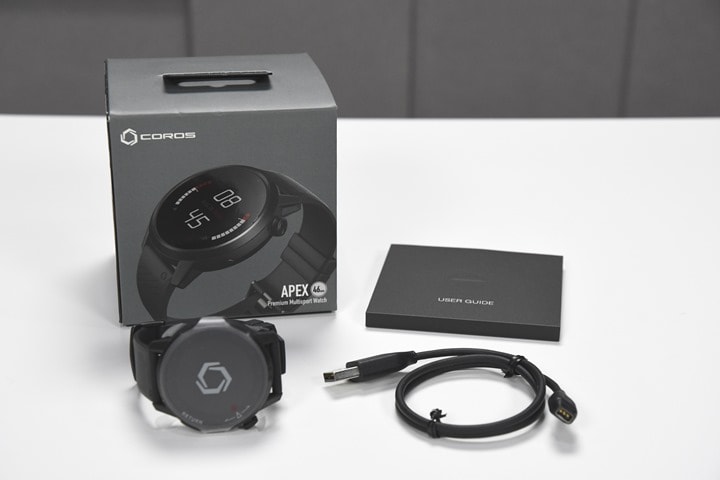
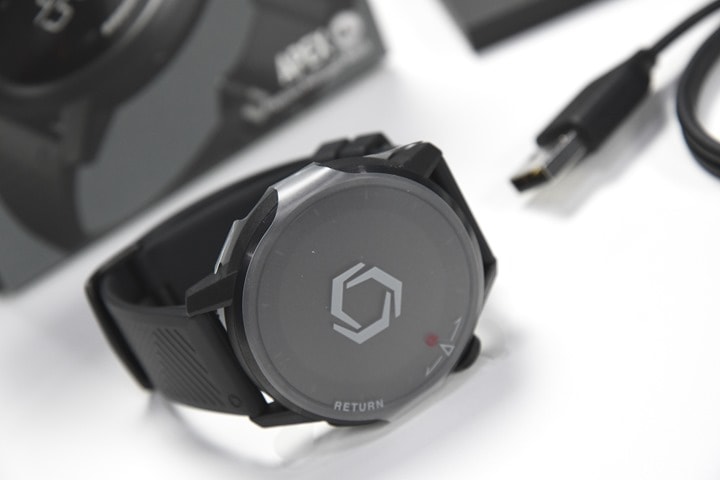
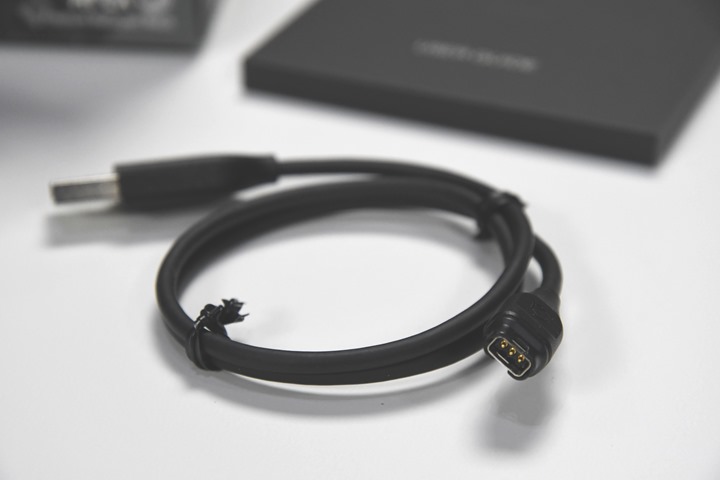
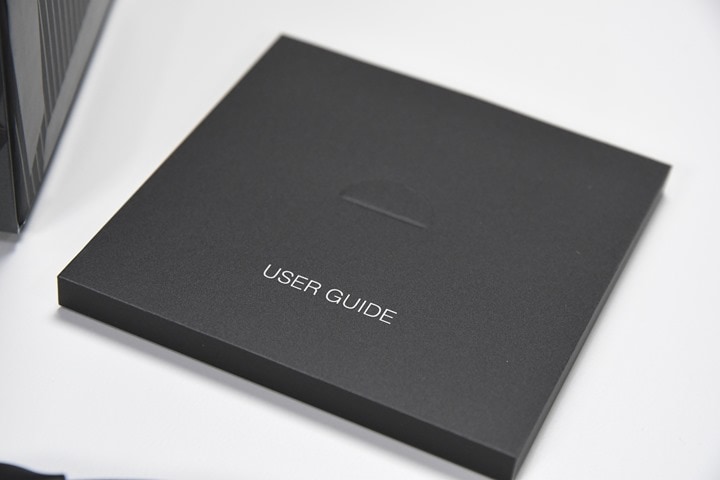

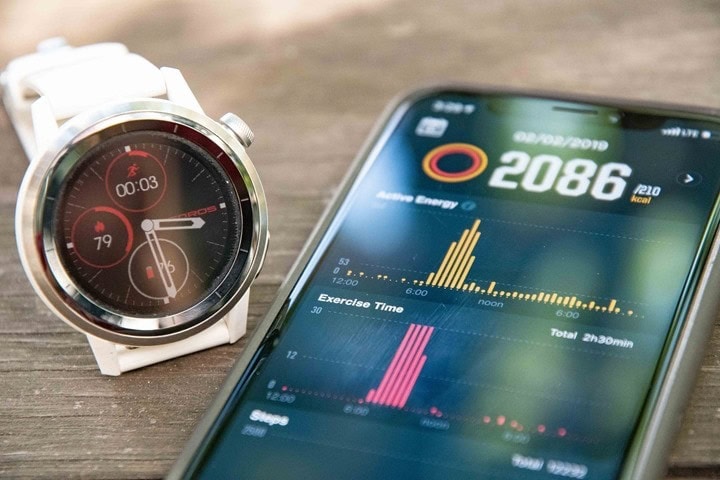
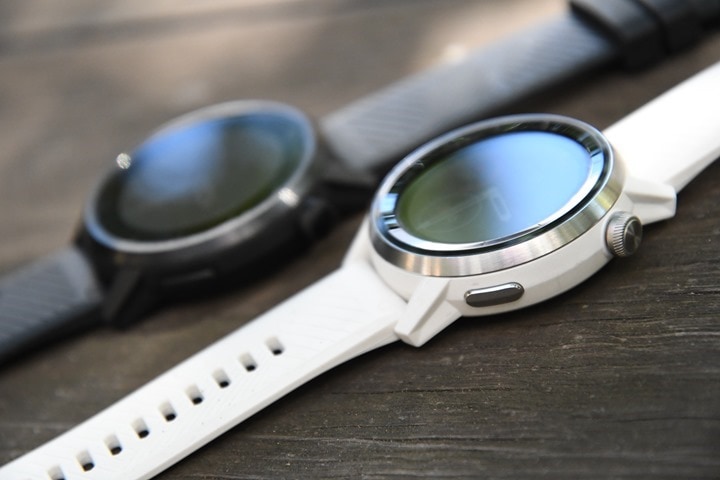
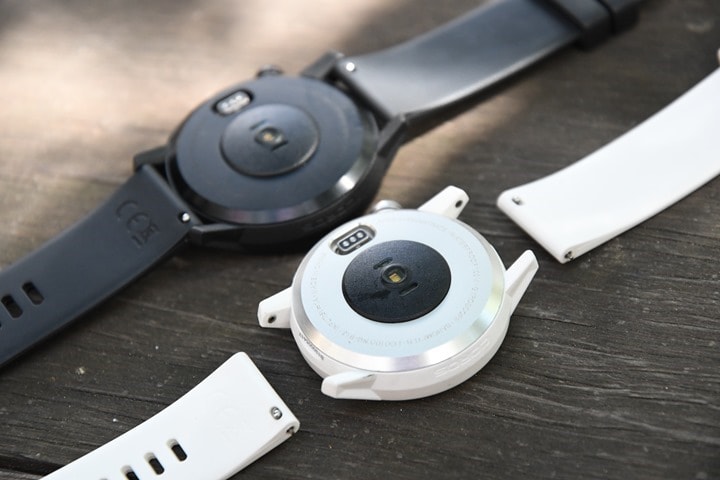
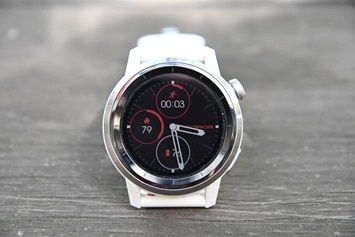

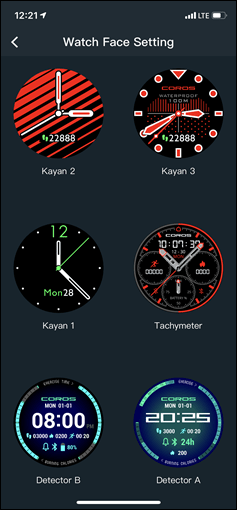
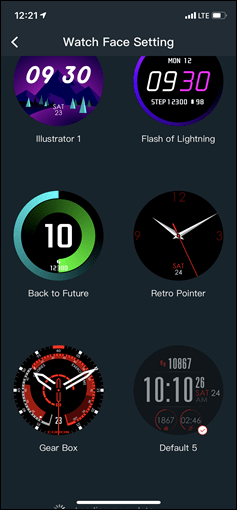
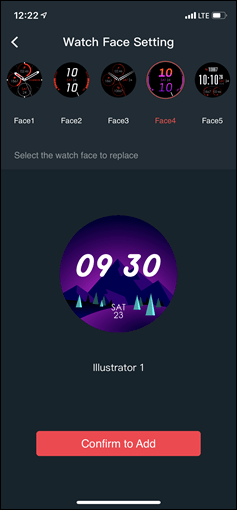
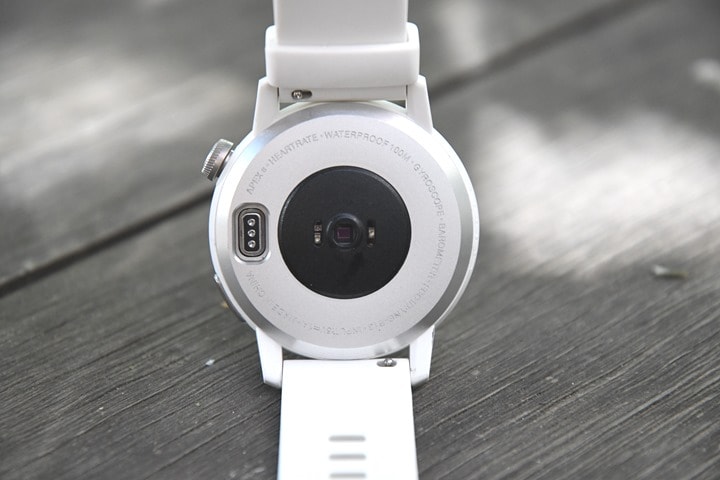
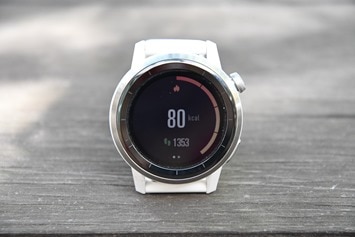
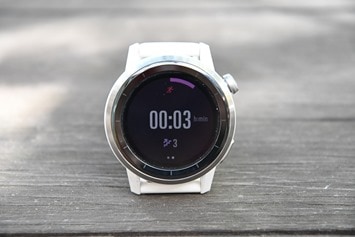
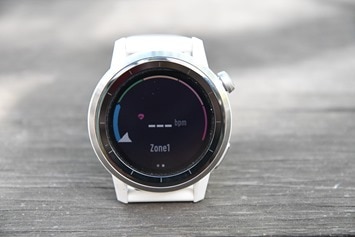
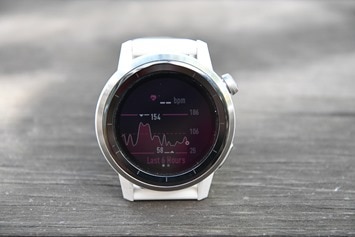

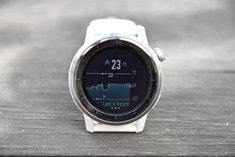
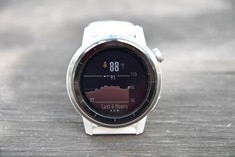
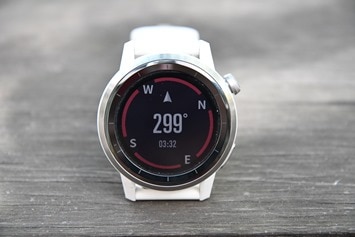
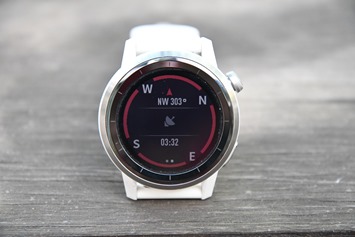

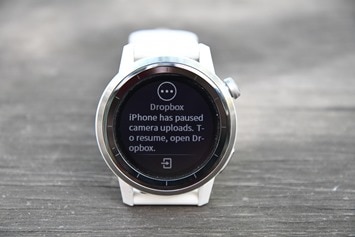

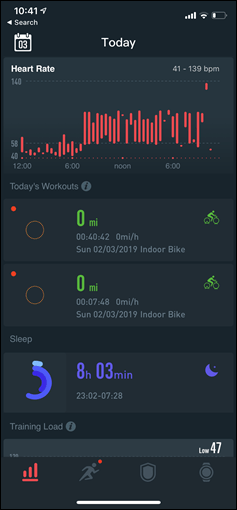
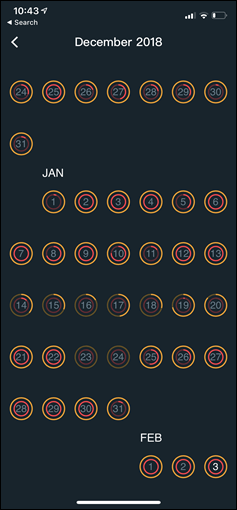
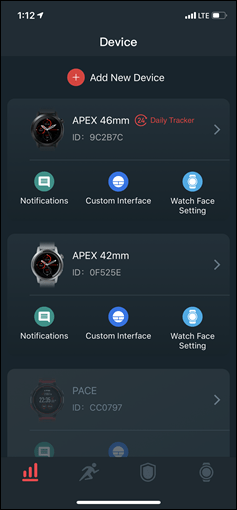
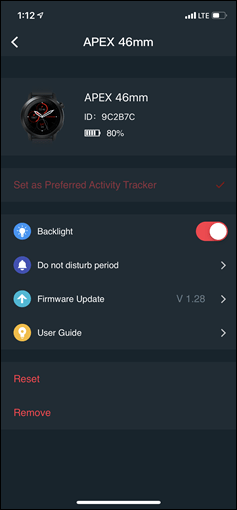
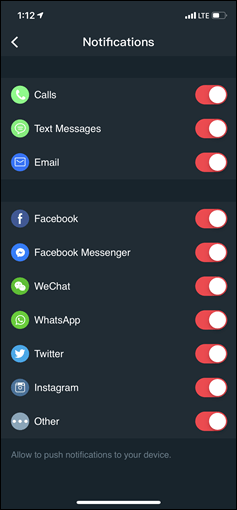
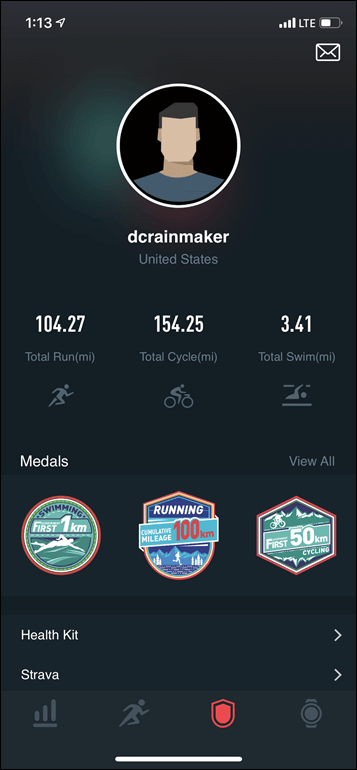
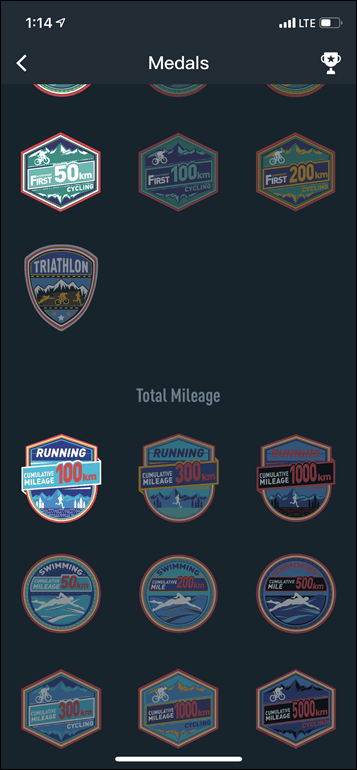
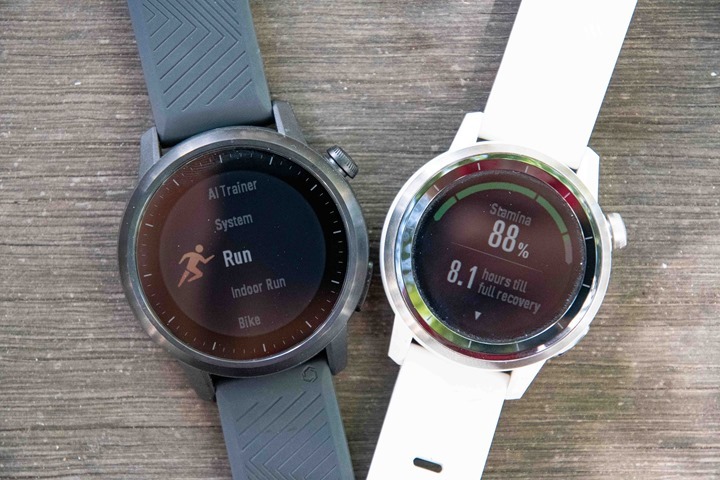

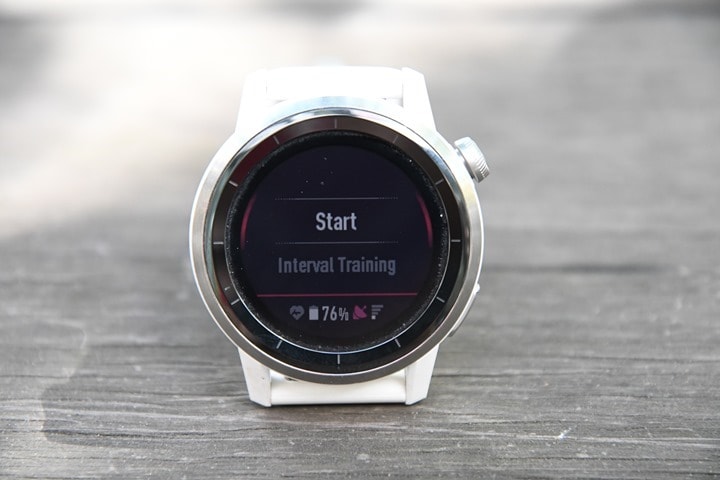
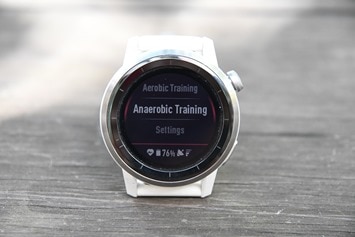
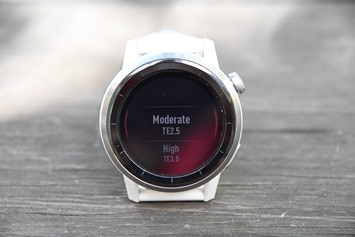

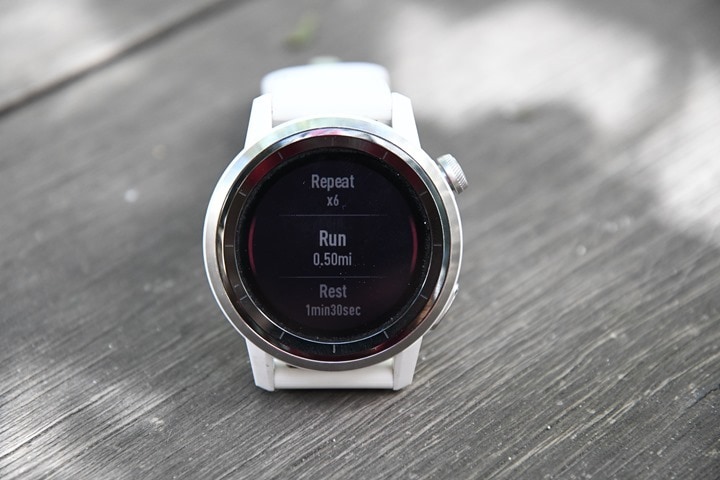
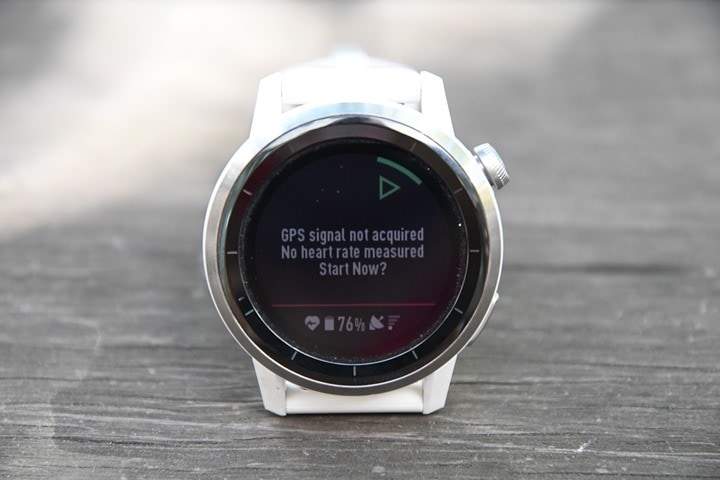
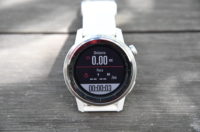
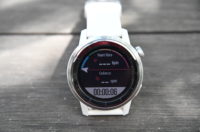
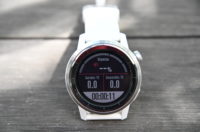
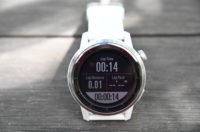
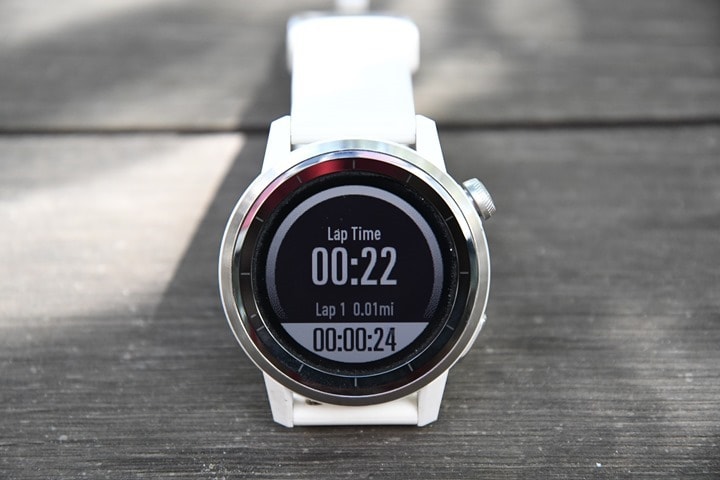
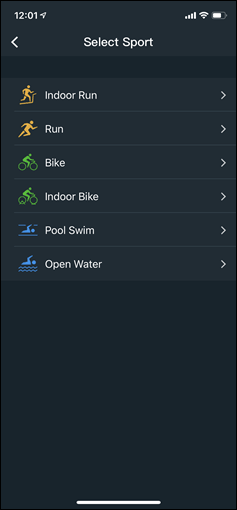
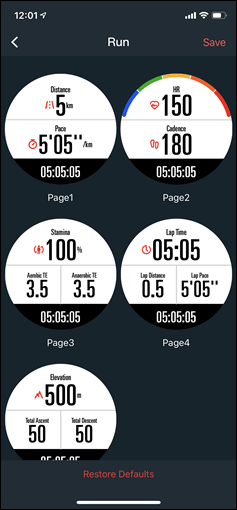

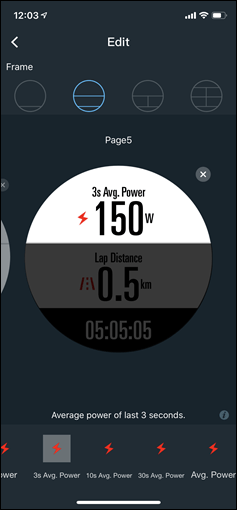
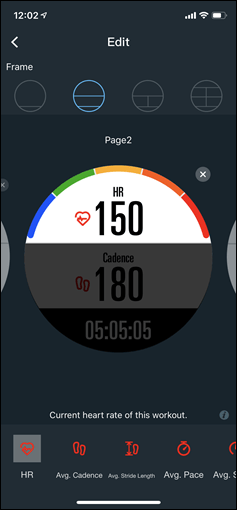
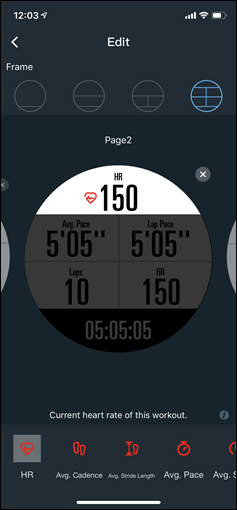
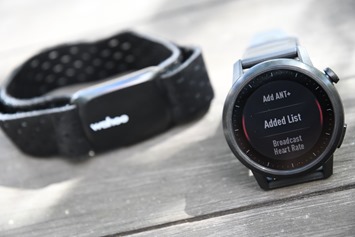
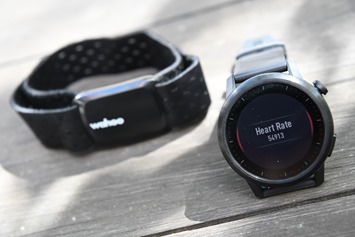
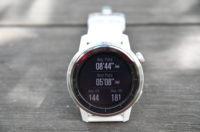
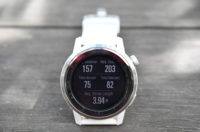
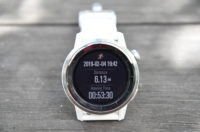
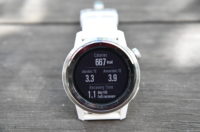
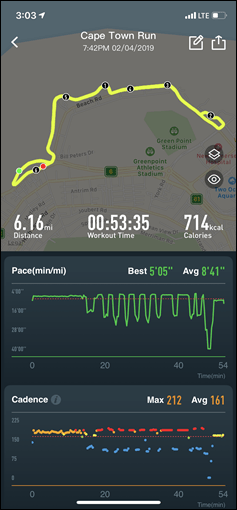
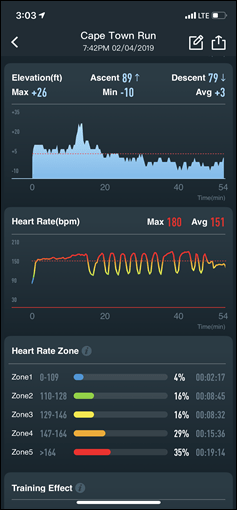
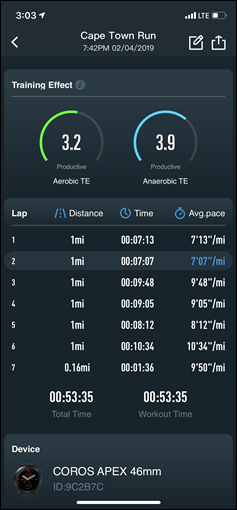
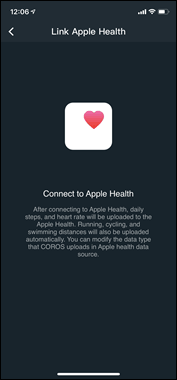

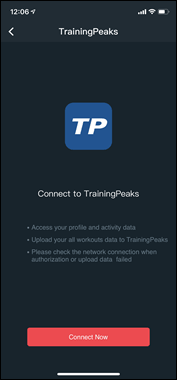
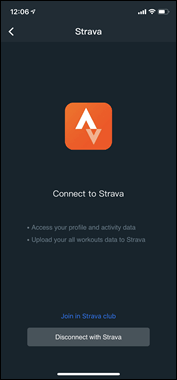
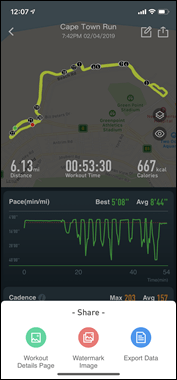
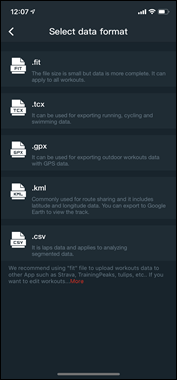
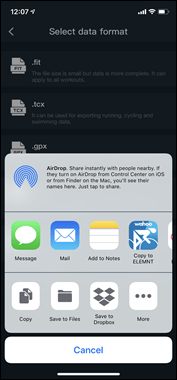
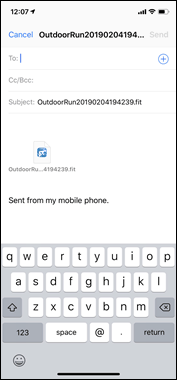
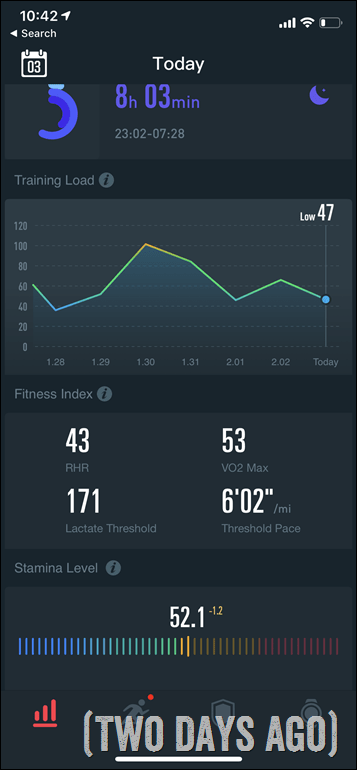


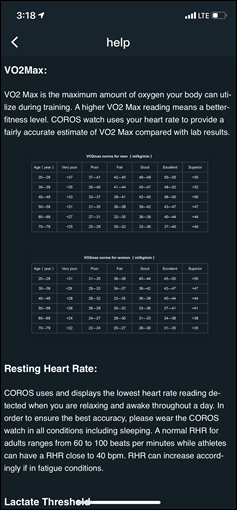
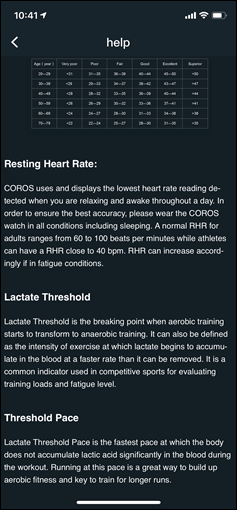
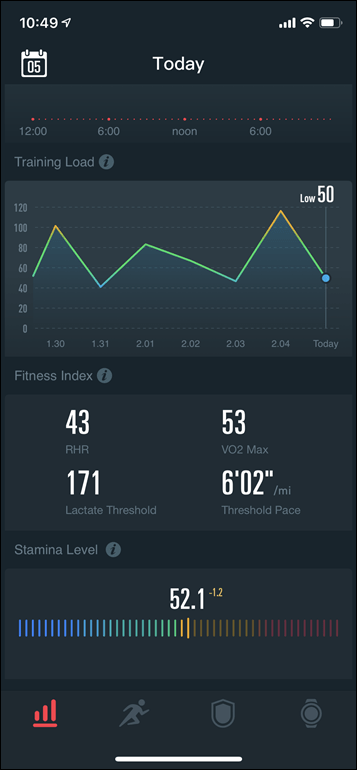
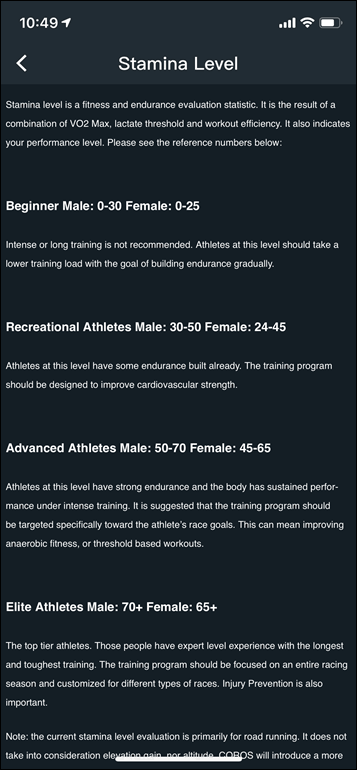
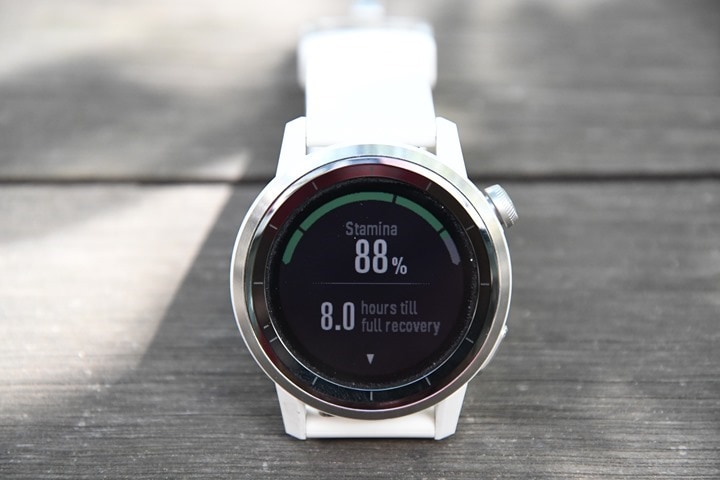
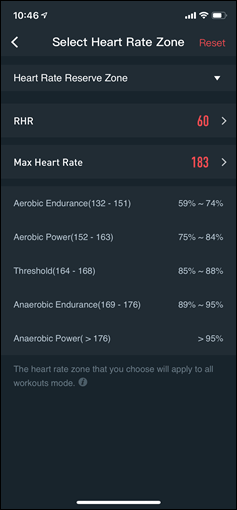
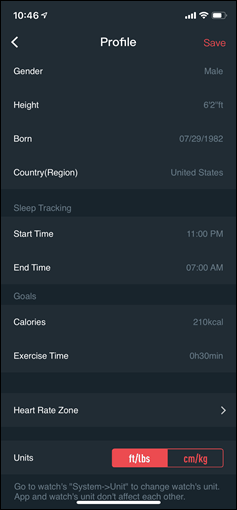
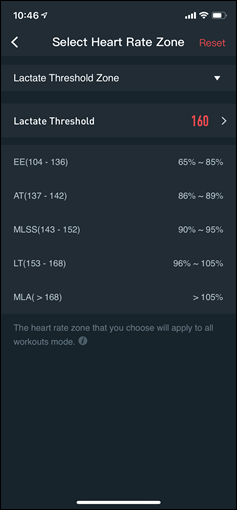
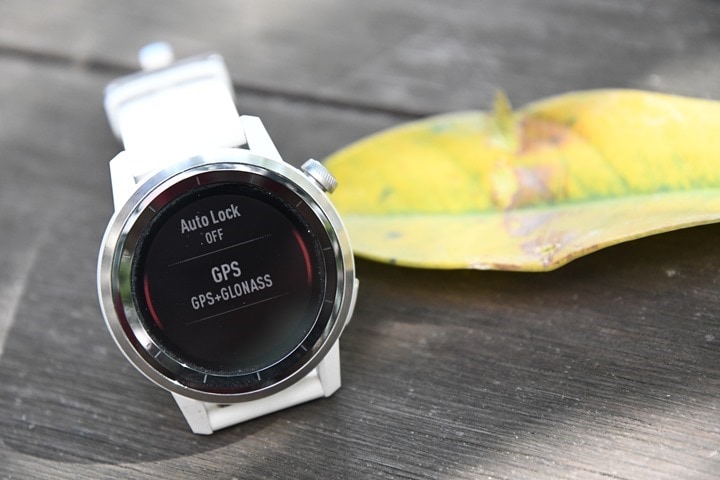

















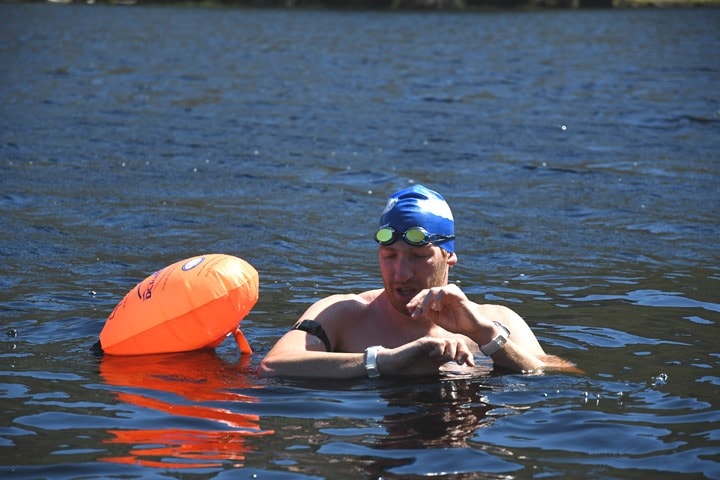




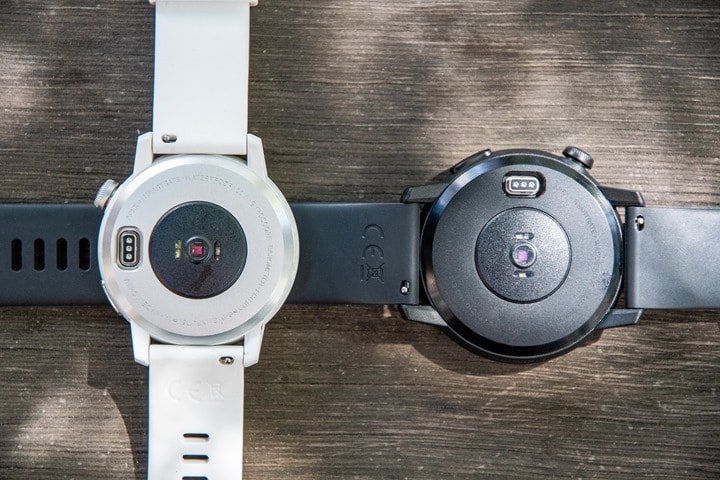














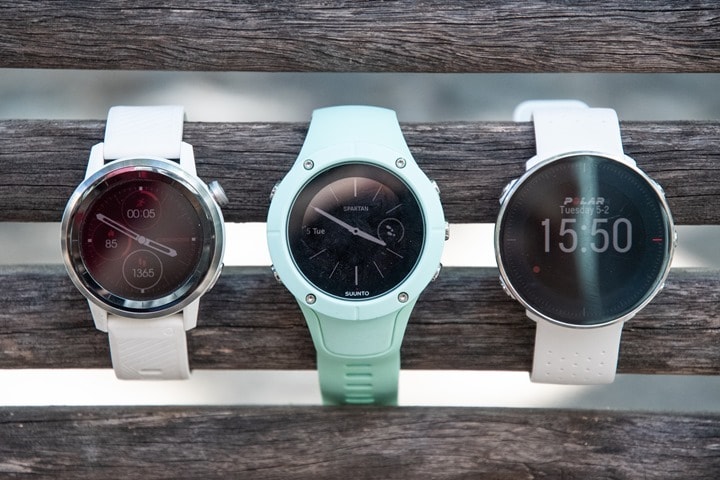
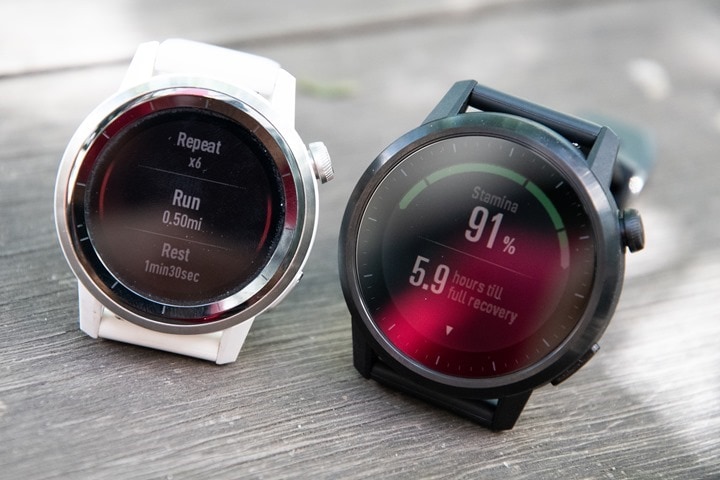
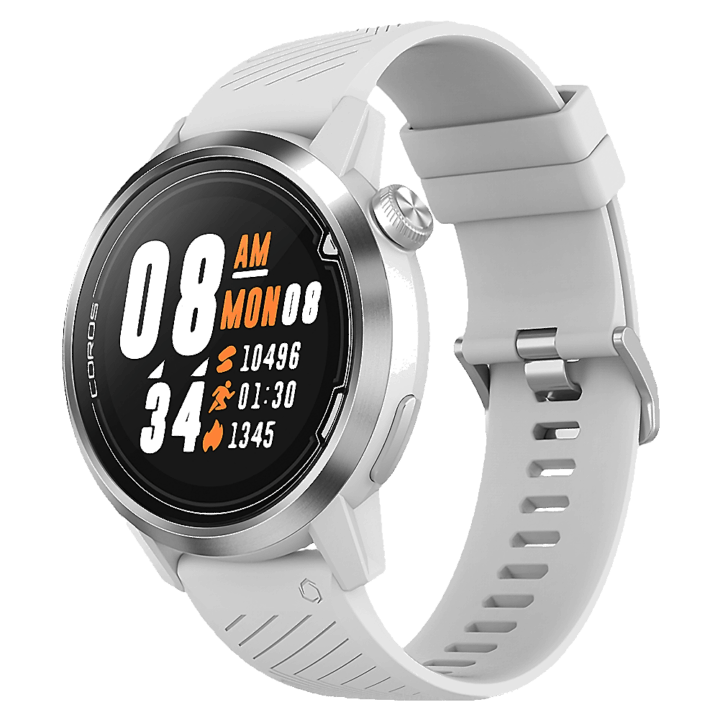
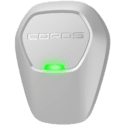
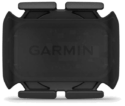



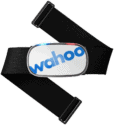





















Great review, Ray.
Looks like a really interesting device and maybe a contender when I come to replace my aging Ambit3 (either when it dies or when Suunto stop me from changing settings on it!!)
I’m intrigued by the HR broadcast mode (assuming cycling accuracy is ok for me / improved by firmware updates) – currently when cycling I record on both my Elemnt and Ambit3 so that my Ambit3 has my calorie total for the day. If you put the Coros into broadcast mode does it still count the activity towards your daily activity – even if it doesn’t record it as an ‘activity’, if you see what I mean…
Also you mention a ‘System’ option (alongside AI Trainer) early on but I can’t spot if you describe this further – is this like a basic indoor training mode (for misc. workouts; yoga, strength and the like)?
Sorry, the system mode is basically just for accessing overall settings. Somewhat of a short-cut back to the settings panel. It can also be accessed via a long hold on the buttons too from the dashboard.
The AI trainer has three purposes:
A) Being confusingly named that has nothing to do with AI
B) Access the current Stamina level and current hours of recovery
C) Allows you to access your history (runs/rides/etc…)
That’s it. :)
Does the broadcasting feature allow sharing live HR data from apex watch to a garmin cycling computer (edge 530 in my case) so that I can add HR data to my cycling workout?
nice.
I skimmed some of the review (will read in detail later). Annoyingly you have made me wear out my F5 key today waiting for this and now I have to dash out.
You said that Coros were being watched and i thought you might elaborate later in the review?
FWIW I used the 46 much more than the 42 and IMO the GPS tracking is often of a high standard on the 46mm.
my understanding re TL and metrics is that they are implemented by a 3rd party (not FB)
Sorry for the refresh, somehow things that I think will take about 2-3 hours left always take 8.
As for COROS being watched, most of the majors that I’ve talked with are watching them carefully. Both in terms of IP infringement, but also in terms of whether they catch-on. For example, on their press slide deck they noted 3,000 athletes using COROS Pace (as of Nov 2018) in total (1 years worth roughly). So in that sense, the numbers are kinda non-existent in the grand scheme of things. Off the top of my head doing napkin math, that’d probably be about 12hrs of product sales for Garmin. But they’ve also managed to pickup a few magazine recommendations here and there, so that’s going to raise their profile.
For the training load metrics, the company says they’ve done the development internally, though some statements imply they worked with someone. As you noted, they and FirstBeat have confirmed it’s definitely not FirstBeat. I’d just like to see some documentation on it. The ‘help’ bits in the app don’t really explain how it works. They just use a bunch of random physio words stuck together that don’t generally go together.
I don’t think Garmin or Polar have much to worry about just yet (certainly, not Garmin), but Suunto’s on notice.
With sunset of Movescount platform and given their app development pace, within months Suunto may be in a very tough spot as far as justifying their pricing. Hardware wise Apex is every bit as good as Suunto 9 Baro (we can argue about button count and touch screen but the materials, design, waterproofing, battery is all there). It is already better in some aspects. At least for me, GPS accuracy looks better. I also like having more than one sensor per type — still a limitation on Suunto side. With navigation just around the corner, all COROS has to do is to fix the errors Ray mentioned above, throw in structured workouts support from, say, Training Peaks or FinalSurge for starters like Garmin has, add a few more sports modes, and support footpod/running power. Given how fast COROS builds out the functionality, I will not be surprised if we see all of this in the next 5-6 months.
Unless a watch manufacturer can offer a compelling platform of their own or throw in a string of lifestyle features like cellular connectivity, offline music, maps, and payments, the watches will be diminished to mere data gathering/aggregating pieces that simply can’t justify prices in excess of $400 tops. COROS got this. They have Apex at $350 and have been integrating with third parties like Training Peaks for analysis from the day one. That’s something for Suunto and even Polar to chew on as they ponder their own future.
Actually, speaking of Apex smart-features… While COROS Apex does have notifications, these support Latin characters only. If you receive something in Greek, Cyrillic, Hebrew, and what not, you are out of luck. All you’ll see will be a bunch of punctuation marks. How can that be in 2019 when even hopeless laggards like Fitbit got a memo is beyond me, but the international audience reading this blog should be aware.
Also, each notification has to be dismissed manually or they will keep accumulating. There’s no Clear All. Dismissing a notification on the watch does nothing to it on the phone. It’s still sitting there in the notification center. Likewise, dismissing it on the phone doesn’t remove it from the watch.
On a plus side, you can kick off a timer and have it run in the background (Suunto Spartan/9 can’t do that!). And timer/stopwatch interface is cleaner on Apex than in current crop from Suunto and Polar.
Suunto Spartan/9 can have a timer running in the background.
Quit spreading #FakeNews
Were you using the Coros 42mm or 46mm for your other GPS accuracy tests? Trying to decide between the two and whether the extra money is worth it for the 46mm v the smaller 42mm for my smaller wrists!
its worth the upgrade! the battery life is noticeably better as is the screen resolution. While the resolution is a minor increase it is noticeable for me. On his gps graphs and hr graphs the 46mm seemed more solid from my point of view. Feel free if you decide to pull the trigger on one to use “Neumann10” at checkout for a discount!
Okey doke…and that’s enough discount codes being tossed around.
Thanks for the review – been looking forward to it and the recent VM review as my Polar V800 has to be retired. I’m giving the 42mm a chance, mostly because the form factor is not huge. It’s really comfortable to wear, especially compared to my V800!
Looking at your side-by-side pictures of both watches, it appears that screen size is nearly identical between the two models -it looks like the 46mm version has more bezel and blackout but the same screen size. Is this the case? I’m a little concerned that I should have gone with the larger watch since my eyes aren’t getting any younger nor will my arm get longer. Could you measure both and lemme know? Thanks!
btw- There’s a growing user group on FB. COROS often pops in to assist with questions/concerns.
42mm actually has a smaller screen (1.1” vs 1.2”), with worse resolution, and a smaller battery too. Unless you have smaller wrists, I recommend 46mm. That watch is roughly the size of Fenix 5S, though slimmer, and sits better on your hand.
Going back to the desserts again? How much weight did you gain during that trip? Do they have a bunch of roadside dessert stands somewhere in the desert outside Las Vegas?
I always love the desserts, especially in the desert.
However, I regret to say that I didn’t have any time in said deserts to visit the dessert buffets during that trip. Sad. :)
UltraMaxMode is already done! Access it via long lower button press during workout.
Thanks! Tweaked!
Hi,
Can one pair an stryd? I assume yes, but, is then the power visible during running activities? And does the data get synced?
Thank you in advance
Nope, not in running mode.
We don’t support any footpod. However, footpod support is on our to-do list and we plan to work something out soon.
It’s been five months since this comment. I recently communicated with you, David, via email; you implied that Coros still isn’t near supporting a footpod. It sure would be nice, and I am confident it would result in a few more sales.
Thanks for the review, Ray! I have been eagerly anticipating the review. I currently use a Garmin Fenix 5s. It seems like a lot of pro runners/ultrarunners are promoting the APEX, so I have been curious about the watch.
I hope readers will support your site through your Clever Training and Amazon links above! I just wanted to add that if anyone wants to order directly from the COROS site, here is a 10% off discount code: AMIE10
this looks like one of their ‘advocate’ codes? nice plug
Hey maybe I missed this in your excellent review but my Garmin tracks not only steps but total miles (steps, running and biking). I have the 46 mm COROS Camille Herron special edition for her world record 24 hour run. I can get total steps on the app but not total miles. Is that not a feature of the app? How could I get this data? Thanks.
Based on the photos and bits of your review, it’s definitely made in China but do they have any operations at all in the US for design or engineering? Based on their website, they went wild with giving these away to pro athletes and have also gone the usual ambassador route on social media. Will be interesting to see how they develop and compete.
Personally, not a fan of the knockoff design or features.
My understanding is all design/engineering/manuf is done in Asia, with only some elements of marketing and the CEO in the US.
I think you’re being too hard on Coros for their training load stuff. Or actually, you’re too kind to Garmin (not sure on Polar). Coros is giving no less BS than Garmin does with the firstbear info. You’re complaining, rightly I think, that it doesn’t make sense. Now you know how a ton of us feel with Garmin. Just because your N=1 with Garmin seems realistic doesn’t mean it’s good, no matter what white paper they conjured up to try to convince you.
My last 18 measurements of my cycling vO2max according to my 935 has been: 59, 59, 59 58, 57, 59, 59, 59 59, 59, 59, 59, 59, 61, 63, 63, 63, 64. That’s pretty impossible.
Yesterday I did 4 x 12 minutes at FTP and was wasted, yet recovery adviser had me at 20 hours recovery and this morning my performance number before starting my recovery day was 11. In other words, not just recovered in less than 24 hours but apparently ready to race. It’s no less preposterous than Coros.
All of this training load stuff, mostly taken from HR, is garbage and none of these companies should be putting it on there really.
Actually, the majority of my point with COROS is there’s zero documentation on any of it.
With FirstBeat (and Polar), there’s tons of documentation (endless piles in fact) on how it works. Documentation that allows me to look at a situation like yours and understand where there’s a gap that causes what you’re seeing – and figure out the cause of that gap. Perhaps the cause is an environmental thing (gear/the HR/etc…), or perhaps it’s a gap in the algorithm.
But with COROS, not only does that not exist, but it doesn’t even pass basic math tests. Numbers shouldn’t be changing on me just because I open the app two days later.
As for saying my N=1 isn’t valid, frankly, that’s an odd assertion to make. I’ve had VO2Max tests done by multiple sources, and I do FTP tests on side. So I actually know these two are pretty darn close most of the time and can judge things pretty well. This isn’t really mystery magic, nor some magical white paper. Though, I generally prefer reading about science than pretending it doesn’t exist. Again, one can disagree with their algorithms, but we aren’t even to that point with COROS yet.
Ray! An interesting observation if you will that’s relevant to your review.
It appears that interval training is only available for Run and Bike modes. Other sports modes (even Run Indoor or Bike Indoor) don’t get it. Not sure what to make out of that.
Interesting, I hadn’t caught that. I wonder why as well. Will have to ask.
Does the heart rate sensor have the resolution to capture HRV?
We don’t currently support HRV but we might offer this option in future updates depending on our development resources.
when can you add ball profiles?
Any update on this?
“titanium allow” should be “alloy” I’ll allow :)
“83% (decreasing from 100% during a workout and rising again afterwards), while the other one shows 53.5” but images show stamina at 88% and 52.1 if I’m understanding correctly, updated images perhaps?
Thanks, I had grabbed screenshots a bit later and thought I caught all the text to images mismatches.
Obviously, as expected Stamina should increase over time as you recover (which is the piece I like).
Ray say: “Ultimately that’s a bit of a religious battle where some people want to tweak on phone and others on the device itself. Nobody to my knowledge in the watch space allows both yet.”
Almost 10 years ago, the Timex Global Trainer could be set up on the watch or on a computer. I was shocked when I upgraded to the Garmin 910xt and had to program it via tiny (and tinny) buttons and endless nested menus.
The TGT was ahead of its game in a number of ways (and of course, also behind too).
Right now I think the best device on the market in terms of tweaking thing across phone/computer and device itself is the Stage Dash units. Unfortunately, not a wearable.
I still find it rather stunning that Garmin cant do this in the app. I’ve moaned about this before, but how hard can it be! You could have profiles on the phone that are easy to send to the watch with easy to adjust screen layouts etc. The settings live in FIT files on the watch anyway (I remember hacking my 220 to show 4 fields and not just 3 by changing the binary!).
There are loads of pointless (in my opinion) fancy features in the garmin connect mobile app – this is something that would be *actually* useful!
Ray, I don’t need a review (I own one and I know where it stands good, bad, and ugly), but is there any reason you’ve shied away entirely from Amazfit Stratos? Certainly a compelling triathlon watch, given it is remarkably lower in price (by far) than anything else in the sphere?
I just looked briefly at the Amazfit Stratos. Compelling advertising. BLE and WiFi connectivity are noted – but not ANT+. mitch W, since you have one – ANT+ or no? Someday we might all be on BLE, but I have a number of ANT+ only sensors, so the Amazfit would not be a sensible choice for me. Although I’d need to sum the cost of the watch + replacement sensors vs. the cost of an overpriced replacement Garmin…
I actually bought a few Amazfit units last winter to review, but by time I got through the queue, the next version was out. :-/
I might give it another go here this winter in a lull.
Am I correct in thinking the stratos still doesn’t have power meter support? That’s a fairly major issue for me.
You are both correct. No ant+ and no power meter support. Definitely some limitations, and not for everyone, but I haven’t found it to be too big of an issue (I have a dedicated cycling head unit for power, and no ant+ only sensors).
I would not say it’s a copycat. I think they’ve actually done some pretty decent work in terms of unique ui, button/screen touch actions, and smart features. I believe they even implemented onboard music before Garmin.
That said, the optical heart rate meter is utter garbage. I can count the number of times it’s looked remotely correct, which renders it’s FirstBeat metrics (yes, they’ve contracted with FirstBeat) pretty useless (but judging by forum comments that may be true of Garmin too). It can be paired with external btle though, and thus get good data.
I think the biggest limiter Ray would find is the app platform and file structure. First files are written as .gpx NOT .fit. You can set up auto sync to Strava, but only activities with GPS (outdoors) can be transferred. Indoor activities are stuck to live in the Amazfit app forever unless recorded elsewhere simultaneously (treadmill runs and pool swims can be an issue for me, but trainer rides are done on Trainer road, so no problem with Strava sync there). The app itself has good points and bad. Much of the watch can be customized from there (or from the watch itself). There are frustrating things as well, like the HR section tracks resting HR and minimum hr (cool!), but only allows you to chart average HR over time. Seriously wtf? So to see historical resting HR, you’d literally have to scroll through each day. I’m not sure why they thought average HR was the important metric to track.
Without writing up a full Ray-length (did I just invent a new measurement?) review, the stratos isn’t setting the multisport watch world on fire. However, it is effective. It tracks runs, swims (indoor and out), bike rides, and about 15 other sports (including odd ones like tennis, soccer, and jump rope). Connectivity to my phone has literally never dropped, so I get all of my notifications and calls on the watch, every time. For a $170 watch, this thing has far exceeded my expectations, and I also will be much more accepting when the next gen comes out to upgrade (vs plunking down $500-700 for a Garmin that no longer gets support/upgrades to new features).
+1 to review amazfit stratos – with every software update it gets better and better.
Thanks for the review!
Sounds like the Coros is at least as good as mid-pack with respect to measuring time/distance/HR and providing a simple workout creator. I don’t really understand what all the watchmakers are doing with respect to training load, VO2Mmax estimation etc. Over the years, I’ve found that just plugging some recent race times into the Daniels Running Formula yields better VO2max estimations than does Garmin et. al.
As for training load stress, HRV does show some promise and I’m sure there are several other physiological markers that will eventually tell us when to push a workout or when to lay back. The problem is that those sensors either aren’t miniaturized yet or aren’t reliable. Hiring scientists to guesstimate the training load based on questionably relevant/accurate data feels intellectually empty to me. I understand that athletes really want to know this, but I wish all the watchmakers (not just Coros) would abstain rather than try to respond with nonsensical results.
Dominant impression I get is they are doing blatant amalgamated copycat versions of other companies’ products in the best, traditional Chinese counterfeiting tradition, the main difference being a different label.
Thanks DC for the excellent review, as always. Can it be charged whilst in use, like Suunto watches can? For the ultrarunning audience COROS are coveting I would think this a necessary feature. Anyone have first hand experience?
Given that the battery life is up to 100 hours, doesn’t seem necessary at all. What kind of ultra running are you imagining?
As to the question, you certainly couldn’t wear the watch while charging because of the charging port location. So no optical heart rate, inaccurate (at best) cadence, and probably an effect on distance/pace since the watch combines GPS and accelerometer data for that.
Dearest Stephen, thanks for your slightly antagonistic reply.
It’s a simple feature question that might be helpful when comparing functionality against the competition. 100 hours in UltraMax GPS mode, sure, but what is the GPS reading interval? I can find no data on that. Suunto’s Ultra mode states a GPS reading interval of 2 minutes, for comparison.
I have seen plenty of examples of ultrarunners charging their watches on the go during a race, should they really want 1s GPS readings. And yes they take the watch off and strap it to their race vest or whatever, using a lightweight portable charger. Maybe they don’t care that much about optical heart rate data etc? Doesn’t seem hard to imagine say, a back of the pack runner in a 200 mile race for example. ‘Up to 100 hours’ doesn’t mean we get 100 hours in reality.
Ray, why do you have all of those watch face options yet I only have a choice of 5 low-res rather naff looking things. I’m on sw v1.27 and there are no updates pending?
Watch firmware V 1.28 and iOS app V1.10.5
Thank you Stephen, updated the iOS app and all good now
Can the screen be flipped 180 degrees? Otherwise, the digital crown looks cumbersome for lefties–wearing it on the right wrist.
If such an option exists on the watch or the app, I can’t find it. The watch does have a left wrist / right wrist setting, but changing from left to right doesn’t change the orientation of the display.
We are aware of this feature request and plan to support 180-degree flip in future updates for wearing on the right wrist.
Definitely looking forward to more stuff with the scosche!
Did you get the swim data with scosche’s app, or with it syncing to a Garmin watch, or… ?
With the Scosche app.
It’s on my to-do list to figure out where the heck that whole sync thing sits.
Thanks Ray for the awesome info. I have been researching a replacement for my Ambit 2S and wanted to try the Fenix 5S Plus but couldn’t justify the price. I am a casual runner, mountain biker, cyclist and hiker. My 2S still works but I wanted wrist HR and a daily tracker, not to mention that Suunto’s plans will turn it into a brick soon. I’m more interested in trends and not exact data. I really like the looks of the Apex and the future updates sound like they will work nicely for me. I’ve ordered a 42mm from CT and can’t wait to try it out.
Ray, intrigued you didn’t seem to do a battery life test. Is that because you don’t have a suitable rood any more?
Also interested in ability to charge on the go, although if it actually does deliver 35hrs it might just about be enough.
Yes, APEX supports charging during workouts. Charging doesn’t interfere with or stop data recording.
Sometimes I remember to do ’till death do I die’ type battery tests, sometimes I just forget.
In Paris it was easier because i lived atop an apartment building with a sunroof thingy, so I just stuck them out there. But I’ll charge up a few this weekend and do them down here in Cape Town and just place them in the garden of the Airbnb house we’re at.
Good news, thanks. Pending the navigation firmware update this will be my new watch ?
What’s the weight on each of these? I’m swapping out an old Fenix 3 which I’m sure is heavier, but curious how these compare to a 935.
APEX 46mm is 55.3 g. APEX 42mm is 50.8 g.
Feel free to check out the COROS Apex/Pace Users Facebook group and learn about their experience at link to facebook.com.
David – Do you know if there are any plans for a desktop site to upload info to? I really enjoy going to garminconnect.com to create routes, view workouts and export my info into a spreadsheet. Thanks!
I have one of these. The screen and battery life are excellent, and I haven’t found any significant weaknesses elsewhere. Just one note on wearing this for winter runs. Unlike some other watches I’ve had – mostly low-end or mid-range – it *does* handle cold temperatures well. On the other hand (heh), I have to wear it on the other hand. I normally wear it on the left, but I repeatedly had problems with the crown button being activated by pressing against my glove. Wearing on the right solves this problem, at the cost of making it a bit unwieldy. In particular, I have to be very careful not to turn a bit when I press to resume Not a big fan of that button TBH, but other than issues operating left-handed with gloves on it seems to do well enough.
Hi,
thanks for the review.
For my bike rides I’m usually interested in the hill slope/gradient (eg. 5%).
Do you know if the APEX is capabale to display this in one of the data fields during the ride?
Hey Ray, you mention “some of the big companies also now separate out RHR while asleep versus awake”. Could you possibly provide the names of the companies/products as I am really interested in this feature. Thanks!
Suunto and Polar both to it, where Polar’s implementation is the best.
I’m still hopeful that on day, Garmin will allow me to totally configure my watches using the app/web. And also allow me to migrate the settings when I get a new watch. One day…
Hi Ray,
What would you choose: Vantage M or Apex?
Thanks
Zoltan
That’s a tough one, but probably Vantage M.
Thanks!
So it doesn’t allow custom workouts. Is that coming as a future update? Is it available on the Pace model? That’s an important feature to me and I’m interested in Coros Pace or Apex due to the features for the price to replace my 920. Also interested in the 935 and Fenix Plus mostly due to Galileo satellites on the Plus. Got a recommendation? Custom workouts, accuracy, and battery life are my most important features
My watch won’t get smartphone notifications, any one have the same issue? I’ve a Google Pixle3.
Notifications only work when not in a workout. As soon as you start a workout the watch will not show you any notifications anymore. I had a chat with Coros about this, and supposedly it is to save battery life. In my mind, this should be a user setting, but currently it’s notifications only during normal wear, no notifications during workouts.
I can’t find the Coros app in Google play store anymore. Anyone else?
Found out from the Facebook group that the Android app was pulled and they have to resubmit, till then you can download the APK if you like doing that kinda thing.
Looks like no updates since December 1, 2018. Sad Panda! Looking forward to Coros fixing these issues.
Actually, there was a moderately significant firmware update on 24 January 2019. At the time, routing was promised for March, so they could still make that date as well.
Update posted yesterday, bringing Navigation (and supposedly breadcumb) and enhancements to “the sensitivity and accuracy of pace related activities.” I have teated route nav on trails yet, but around foot paths in urban area it worked well enough.
Ray, most of the negatives you cite seem to be centered on the functionality of the phone app and some of the fancy metrics the watch tries to do. I don’t really care about the functionality of the Coros phone app (I almost never look at my Garmin phone app, unless it’s not wanting to connect and upload), and I already think most of the training metrics my Garmin watch throws out are crap (Garmin just ignores all swims without HR in all their training analyses) so I’m prepared to ignore the Coros metrics as well. If all I want is to have the watch upload to TrainingPeaks, would this become a more viable alternative to a Garmin?
Every Garmin Triathlon watch I have owned, the Barometric Altimeter has broken. The fitness metrics can be done better by a website than by a watch. I don’t run with music, and I don’t want to pay for lunch with my watch. But I’ll gladly pay half the price to get a watch without the stuff I don’t want. I know many people want these features, but it seems like they want me to workout with an 18-wheeler on my wrist, full of apps that will break at some time in the future.
Can anyone tell me if this watch has a “stand alone” stopwatch that does NOT require engaging the GPS?
Yes. It has both a stopwatch and a timer feature that are distinct from activities.
Thanks, Stephen! Do you happen to know if that applies to the Coros Pace model as well?
I don’t know anything about the Pace
I’m currently trying the Apex 42 to see if it’s suitable but can you let me know the following:
* How do you change the time on the watch face?
* Can I switch from running mode back to real time & back again without losing my running time?
Settings -> General -> Date/Time -> Set Time
I don’t think there’s a way to switch to the standard watch face during a workout, but you can set the time of day as one of the items to show on a workout display
I am actually considering this watch it has a few key features that i think would be ideal for Ultra running – im recently moving up in distances from 50K and need something that can last longer than 8 hours that my Polar M430 offers , i was Considering the Vantage V but feel its overpriced for what it is and that led me to consider both the Garmin 935, Fenix 5 and Suunto 9 but with this watch for the price if they an get the ability to follow maps it would be reasonably priced enough that i wouldnt feel too bad if in a year or so they stopped updating it or it wasnt up to par ! seams like a large number of Ultra runners are advocating it (makes me skeptical) lol
I have had this watch for over a month and have taken it for many runs in the woods and on the track… My assessment is that it is just plainly a bad watch. Here is why. I grant the fact that it has excellent battery life, but this seems to be to the expense of turning off other functionalities when not needed. For instance, I have a consistently bad GPS reading whenever I stop for a little while. That’s when the GPS just turns off and will catch up at a much later time, the rest of the sensors keep reading though… The worse part is, however, that it also seems to turn the bluetooth off randomly leaving users with no control to sync the device with your phone. This is very bad as I cannot analyze my training when needed. I should have opt for another brand.
I certainly hope my experience differs, because I definitely take breaks-a-plenty on my long trail runs! Esp when I’m leading, so slower folks can re-group, and/or for map reading on my exploratory ones…
There is one thing that makes me nervous about purchasing this watch….the digital knob. Has there been much experience with current owners having their watch “pause” or “scroll” on accident? If so, how often? Thanks for your feedback.
Never had a problem. TBH, though, I don’t pay much attention to my watch during a workout. Mostly I use it to analyze workouts after the fact.
There is an option to auto-lock the buttons (including the knob), both during a workout and/or in normal use. That mode requires a pressing and holding the knob for a full second or two to temporarily unlock it. If anyone did have a problem with accidentally activating the knob or button, that should take care of the problem.
This has not been an issue so far, the hold function works as intended. you’ll have to press a bit linger to start using it.
I have been lurking through reviews everywhere. I think the Pace would suit my needs but the Apex looks much nicer and more durable for all day every day use. The knob might be my biggest concern. I currently have a fossil samsung sport watch with a knob, same side as well. When I workout, bend over, pick up a child, it consistently presses the knob and takes me to google screen etc. Its VERY annoying. Even the lock with a hold would be annoying because if anyone has done front squats or weight lifting, you may be in a position like that for several seconds.. essentially locking and unlocking.
Pace is at end-of-life with no further updates planned.
To unlock the screen on the Apex, you rotate the crown; pressing the crown for an extended period of time won’t unlock..
Thanks so much for that quick reply!
So in your mind, if you were on the fence between the Apex, Pace, and say Suunto 5.
At this point the crown was really my only concern. You think its completely function (physically) for what I am describing?) front squats, pullups, etc? Put App/metrics/etc aside.
I have no experience with or knowledge of the Suunto 5. The Apex is definitely a step up from the Pace (and it will continue to get updates, e.g. Stryd support coming soon, unlike the Pace). Whether that’s worth the price difference is something for you to judge.
I’ve never had a problem with the Apex crown.
Just a follow up to my questions. I pulled the trigger and got the 42MM Apex. I was most nervous about the crown and let me tell you that was all for nothing. Its angled in a way that flexing your wrist will not hit the button while weight training like my Fossil SMartwatch did. The autolock function is great for me in casual mode. When I run I actually prefer it off so I can easily slide the dial for different stats. No remorse over any of that. The ONLY negative so far is the bezel of the 42mm, I dropped the watch from about waist height onto ceramic tile and it scratched the metal. I was a little shocked by that. Otherwise the native app and syncing with Strava has been simple. Its comfortable and menu is simple to use. I have yet to really dig into the data screens for the sport modes.
Thanks for the 10% discount via CleverTraining! I’m giving the Coros Apex a shot, and since it’s new, 10% seems to be the best discount around. Excellent reviews. I think you said somewhere that Garmin is competition – for itself. My 910xt seems to bricked itself in April (4/6/19 GPS Epoch stuff? Maybe, or just coincidence). Really liked that watch and tried with two more of them, but to no avail. After a DCR-style test (sorta), I’m convinced something changed with the GPS system that the old firmware (3.20 latest, years old) can’t handle after 2 hrs running +/- with a bit of tree cover. The Garmin rep didn’t say it explicitly, but implied they aren’t going to spend any time on such issues for this model. Makes me shy away from the 920xt. And perhaps even brand new Garmin in general. I’ll see how the new kid on the block (Coros) does for me.
is it consider upgrade or downgrade for me if right now im using garmin fenix 5??… soory for my bad english…
Do you think the latest firmware update has improved the hr and various metric readings?
Hello, I am wondering the same.
And another question: which watch is best suited for tail running? Coros apex, polar vantage m, Garmin forerunner 245, polar vantage m, other? With a focus on accuracy of measurements (even altitude without barometer. My vivoactive 3 has a barometer but not accurate at all). Fancy functionalities and even training planing are not useful to me. Thanks a lot and very nice website!
I meant Suunto 5 and not a second time polar vantage m.
Another option I am considering is the Forerunner 245 which falls around the same price range as the Apex. It has 24 hours of full GPS life which isn’t too bad and better than most Garmin. However, it lacks altimeter which is crucial for trail run and hiking. I have been lent a Apex 46 and I can say the battery life and GPS accuracy is great. I can’t say for heart rate accuracy because this is my first GPS HR watch, it seems reasonable. Besides, a lot of coros user mention HR accuracy has improved with the latest firmware update.
I like this watch being slim and has comfortable watch band and light! I am ready to buy this watch but still hesitating because I might miss the Garmin’s superb features and UI as well as Firstbeat algorithm. Furthermore, the Coros community is fully packed of ultra runners and improvements are being made over time too.
DC Rainmaker, please clear away my hesitation by telling me about the hr accuracy on the latest firmware update!
Speaking of the Garmin’s superb features, I only run, trail run and hike so those are the only mode I ever use on the Apex too lol.
I went for a run today using Coros Apex and my Apple Watch S4.
Distance was spot on, pace was spot on. I am attaching the HR plots in case anyone is interested. I wrote a little Python program using the fitparse library and visualized using pandas.
They look close enough to me. AW was on my right hand and towards the end of the run at 93 degrees F, the sport loop got really wet and was slipping down my wrist. I did not see any cadence lock issues with the Apex.
Interesting watch, battery sounds amazing. Definitely worth a try
Hey Ray,
Would love to see an update on the Coros Apex after many firmware updates since your great review.
Thanks
Ray,
Just a quick question. Does it allow your to pair to more than one ant plus HR sensor and store a list of them and can you rename them. Unlike suunto which only allows one at a time.
thanks,
dale
Hi Ray,
Looks some media received the recently announced APEX PRO relative positive, despite significant uplift in price compared to APEX you reviewed.
When can we expect any thoughts from your side if at all?
Thanks
Not a single notice about the APEX PRO till now. Seems that Ray hold no brief for Coros
Oddly enough, a unit just arrived yesterday unannounced.
I think the value prop is better there than Vertix, but in the grand scheme of things most of my comments from APEX here hold true still.
Just a question.
On interval running mode can you set different hr alert for speed and rest phase?
Thanks
Please review the apex pro :-)
Thank you
Does this thing connect to Zwift and show real time heart rate while riding?
Do you have any thoughts on the Apex Pro?
Thank you :)
Mate,
How are you feeling about Coros down the track? Although the Pace was a copy of the 735 (a great watch though, particularly with 50hrs Ultramax added in) , the newer Apex/Pro/Vertix are standalone and IMHO really good watches, at even better price points. Garmin are pricing themselves out of the market now (in Oz anyway) and thus Coros represents a very good (if not better, if you don’t need all the bells and whistles etc) value for money argument. While I don’t think Garmin/Polar are in any trouble, Suunto I think is on notice as they;’ve lagged badly of late. Thoughts?
I’m feeling reasonably positive about where COROS is going at this point. I still think their higher end watches are overpriced, but I think the logic of adding updates to ‘older’ watches is key and if they can keep it up going forward, it makes them super compelling.
Garmin meanwhile is selling more watches and making more money than ever before. Polar is doing OK sales-wise, while if it weren’t for Suunto’s new owners, I’d be concerned about them going under. They furloughed a ton of staff until mid-summer, which won’t help matters either. I haven’t heard of furloughs at any other sports tech companies.
What GPS watch do you find giving most bang for bucks?
Thanks for your great work with tests!!
Is there an updated deep-dive into COROS sleep tracking?
Thank you these in-depth reviews!
I am looking for a watch that can be mainly used on the computer, not a smart phone. Does coros offer this? I haven’t seen anything about computer usage from anyone.
Would you have a recommendation for me? I’m not looking for all the frills, just GPS for running, and being able to use it long-term ( 8+ years). Garmin keeps outdating their watches and I’m tired of buying new ones.
Thank you!
Coros is not the watch for you if you want access to data on a native platform online. They use an App on the phone only but does sync flawlessly with Strava. If you are in the strava world already, this will be seamless. The batterlife on the Apex 42mm is excellent, the GPS is great, especially track mode. If you have a big enough wrist (greater than 7 inches) id recommend the Apex 46mm over the 42mm, you get more battery and some more rugged design materials.Otherwise I am extremely happy with my purchase and usage. The app was a setback for me at first but Strava does everything I need.
Have your issues been addressed since the review? I know they’ve added new workout modes but have things such as your issue with the training load and the heart rate improved? I’m going back and forth between the Garmin Forerunner 735 (which doesn’t seem to have the best reviews on Amazon) and the Coros Apex.
Thanks for such an in depth review too!!
Thanks for the review Ray. I recently got a coros Apex 46 mm and liking it so far. With latest and constant upgrades to their product, I get a feel they are slowly moving away from a mere duplication of other brands. In terms of looks, functionality and bug fixes, coros has been continuously adding new stuff. The battery life is still blowing my mind.
So which sporttester will I buy?
Coros Apex for 349€ or Garmin Fenix 5 for 325€.
Hello.
Tell me how is the visibility of the display? It seems to me that the visibility is a bit blurry compared to the new Garmin models ?!
Hi IIiyan,
I have a Garmin 245 and Apex Pro. The screen is very similar, and not blurry at all, it’s just that low powered lcd look. The backlight is maybe a tinge bluer hue. I’m missing the virtual racer from Garmin, and I’ve contacted Coros in Canada and the US, but there is no indication on new features coming. It’s trivial, but with Garmin you can have the temperature in metric, and distance in imperial. That is something I wish I could so, but I can’t. The watch is light, and is nice looking, not the typical plastic look of the 245,745, or 945. I love the watch faces compared to Garmin. Heart Rate, and GPS track pretty much exact to the FR245. My VO2 max is 40 with Coros, and 47 with Garmin, so who knows what’s right. Yes, battery is great. For the money, it just leaves me wanting more. Will Coros add features in 2021? who knows.
Is it worth buying an Apex 46, the model is from November 2018? I will ask you for advice!
I am not an athlete, I am a person who sports for health. I run, go to the gym, ride a MTB, practice high-intensity training. I’ve never had a sports smart watch. What I’m looking for in the watch is good battery life, secure water resistance, MIP display with analog face and good visibility, reliable operation, reliable detection, easy use(Watch and APP), receiving messages during training and if it can be useful in strength training. I also have the whim to have an altimeter to accurately detect altitude displacement and follow the GPX track (I will rarely use this feature!). I do not stick to multisport mode, recording heart rate, recording sleep, connecting to sports belts and color maps. I hesitate between Apex 46, Forerunner 745 and maybe Forerunner 945 (for Garmin I have a 15% discount and the prices below are discounted).
Coros Apex 46 – 350€ / 426$:
+ cheapest;
+ long battery life – 30 days;
+ sapphire glass and titanium and aluminum body;
+ 100m water resistance;
– It is old, model November 2018
– mobile application only.
* What worries me the most is that it is an old model from 2018 and the lack of a web application.
Garmin Forerunner 745 – 426€ / 609$:
+ latest model 2020;
+ more and improved sports functions;
+ emergency incident message;
+ mobile and web application;
+ mobile payment (not important, but a good option);
– shorter battery life – 7 days;
– 50m water resistance;
– plastic body and weaker glass, but I like it and prefer it more than Fenix 6;
– more expensive;
* I’m worried about the smaller battery and the strength of the watch (case and water resistance).
Garmin Forerunner 945 – 467€ / 669$:
+ longer durability than FR 745 – 14 days, this is the only plus for which to buy it and pay the higher price;
++ all the advantages of FR 745;
+ and more functions;
– very expensive;
– again plastic body and weaker glass, but I like and prefer to Fenix 6;
– only 50m water resistance for 467€ / 669$ ;
* I am worried about the price and strength of the watch (case and water resistance).
A few thoughts: The Pace 2 lacks only navigation, the Apex Pro and Vertix are unreasonably expensive compared to the leading Garmin models. I like Garmin Instinct, but analog faces suck. The base Fenix 6 is regularly sold at a very big discount, but it is heavy and I think it looks quite cheap for its price! Polar models ….. Hmm …… I don’t know ….. they are not convincing and seductive! Amazifit Stratos 3 is a spare, the cheapest and perhaps a painless option.
Greetings.
Ilyan,
I got mine a while ago (march 2019), wasn’t so fond about it at first, but now… I just love it. For many reasons. The main one is that it holds charge for over a week, even using the gps 3 time/wk for my runs… It’s not so accurate in the pool, but it is an outstanding watch. Low profile, simple, but with high gps precision, cardio and all that. It is easy to read and simple. I use it everyday and are really hoping that it will last for a couple years more….
my only issue now with it… is that I believe that it needs to be cleaned as some lint is making it hard to push the dial button… i don’t know if alcohol will do… any hint out there, the more Coros savies?
The Instinct is actually a really excellent piece of kit. And you do get used to (and like) the screen for its clarity in all conditions. I own a Coros Pace, Garmin Instinct, Polar and now a Suunto 7. And you know what? despite the limitations of it being a smartwatch, I wear it all the time (the Suunto). The screen is gorgeously vibrant, it does almost everything and more (than an Apple watch), is rugged and it’s mapping capabilities are damn amazing. Depending on your “use case” the Suunto might be better than the Amazfit, especially since there seems to be always heavily discounted S7’s around the place. Well worth it.
Ray, given how old the Apex (and Apex Pro) are by now, do you think it is still worth buying them? Should one wait a refreshed/new replacement?
Second this question, especially since the Pace 2 has been released since the Apex.
Yeah, I’m honestly not sure. On one hand, the APEX PRO has received many updates (as has the APEX), virtually all of them I think.
On the other hand, it is, by COROS definitions anyway, getting a bit long in the tooth.
That said, as I concluded this review with – I wanted them to focus on software/app updates rather than just spitting out new models for the sake of models. And indeed, they did exactly that (and have supported it well).
Can the coros watches be used without smartphone app since they don’t seem to have a web interface like Suunto/Garmin?
During a running workout on the watch, can I see received messages or calls?
Decided it was time to replace my Polar Vantage and went with the Apex Pro, despite your warnings about the app, mostly because I don’t really love that all the Polar watches look pretty much identical (I know, maybe shouldn’t be high up in my decision process, but it is).
I have a few problems with the watch itself. First and most egregious is that I can’t access Navigation from the watch during training? I can plan routes or I can train, but I can’t do both? That seems like a super-obvious mistake – also, why can’t the app just automatically detect that I completed the scheduled run? Weird. In my experience with Polar and Garmin devices both figure that out.
Second, I live in a place where it rains pretty often and I also have 4 kids, so I do about half of my training on the treadmill. Why can’t I train on the treadmill? Please let me train on the treadmill. I am already missing the Polar ecosystem. I’ve made a huge mistake.
Can someone comment the navigation possibilites. What can you plan? While on the run switch between navigation and data?
What happens if I accidentally hit the lap button while I’m using this watch in the trail run mode? Meaning, how will it impact the 1 mile notifications that the watch is set to do automatically? Also, will it wipe out the mile lap times on the data screens I’ve chosen to use? Does it overwrite or supersede the automatic 1 mile lap updates that I’m so used to? Can I deactivate the lap button?
Ray, we used to work at MS at the same time. Doug Thompson and Chris Tremonte were all friends. On one of your trips to Redmond I got the privilege of supplying you with cords you forgot, a front bike wheel and eventually got to jump in some freezing cold water (Lake Samm) so you cold test some watches. Recently trashed another Garmin watch and moving to a Coros Apex. Hope you are well.
Hey Edward!
Good to hear from ya! Indeed, I very much remember. Good ol’ SBR Team DG.
And remember that swim too, here in fact: I belive: link to dcrainmaker.com
Hope all is well on your side!
Hey Ray,
In this review, you really shredded the accuracy of Coros’ training analysis (workload, etc), and their general polish. I’m just curious whether you’ve seen things improve since this review was written.
Thanks for such a great resource!
Justus